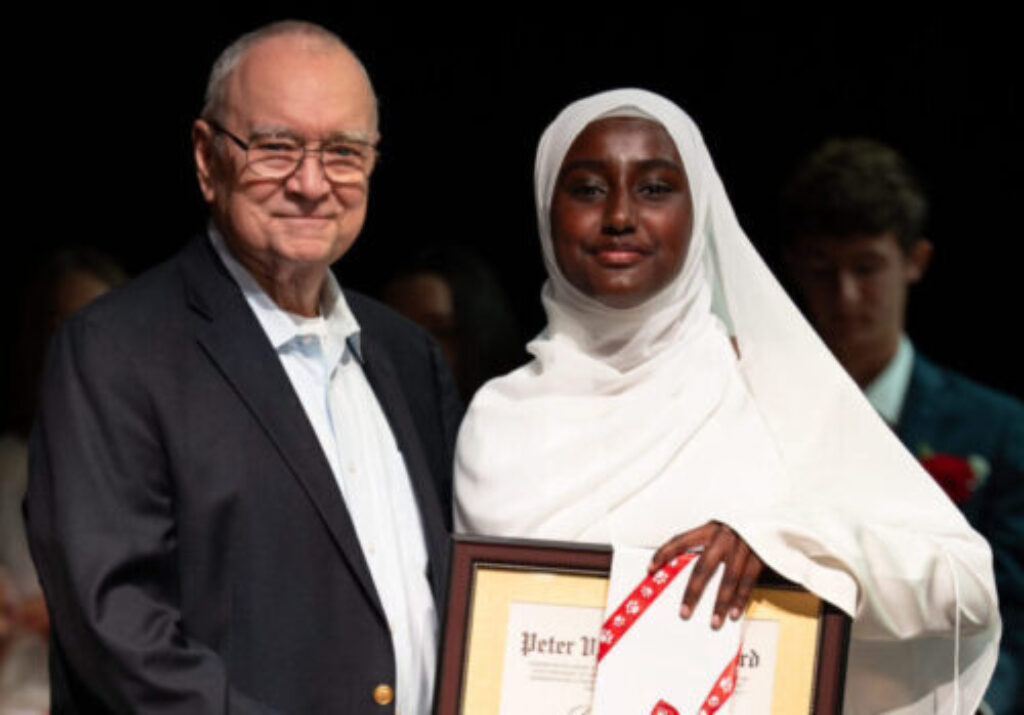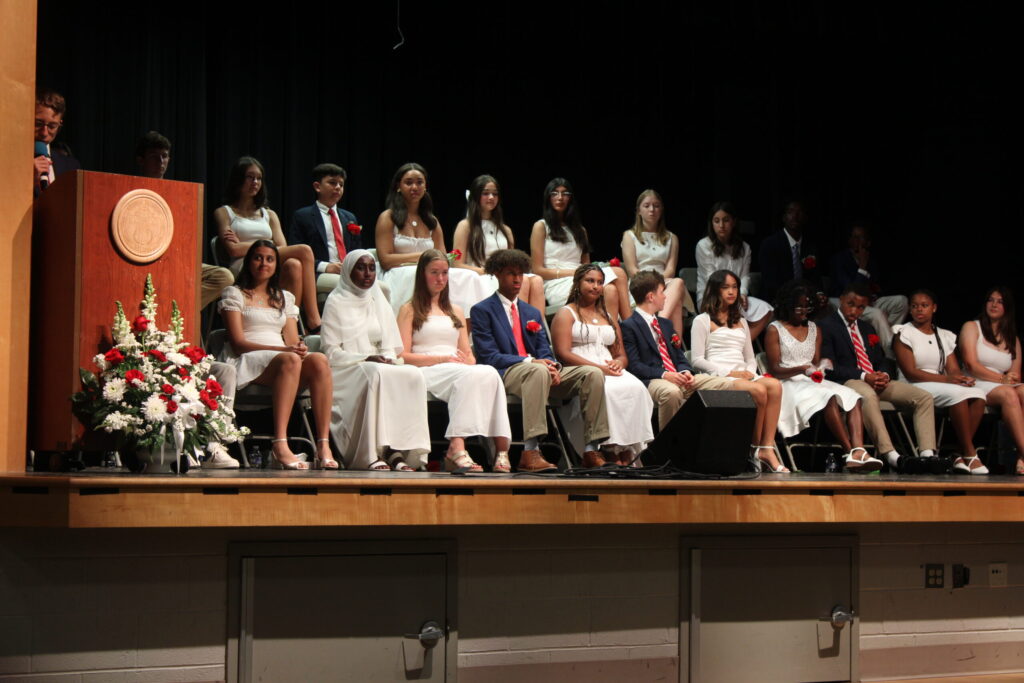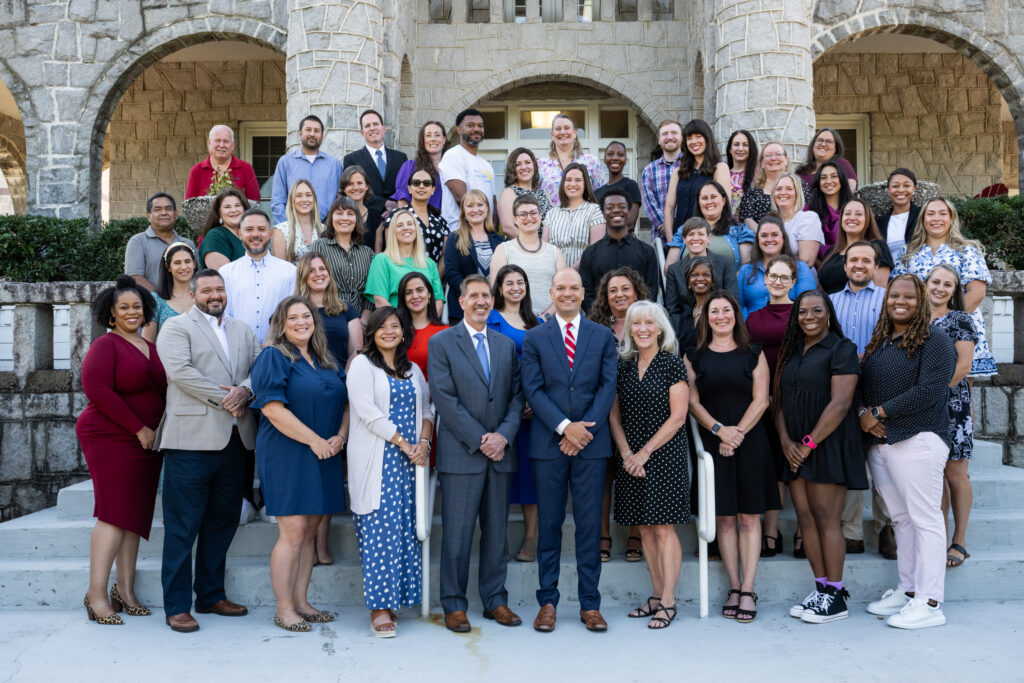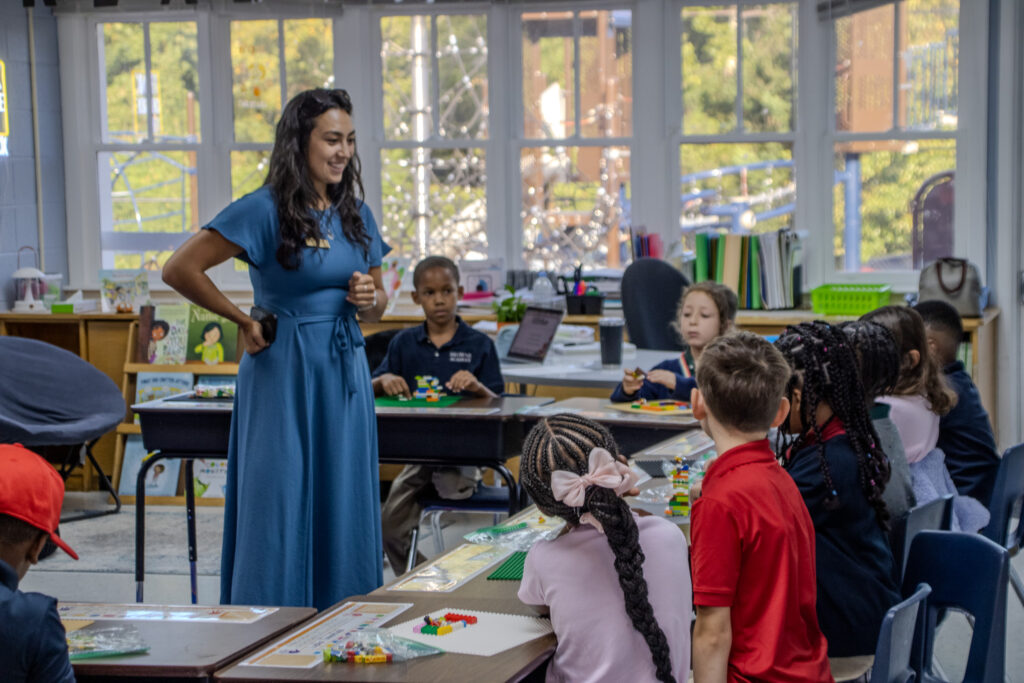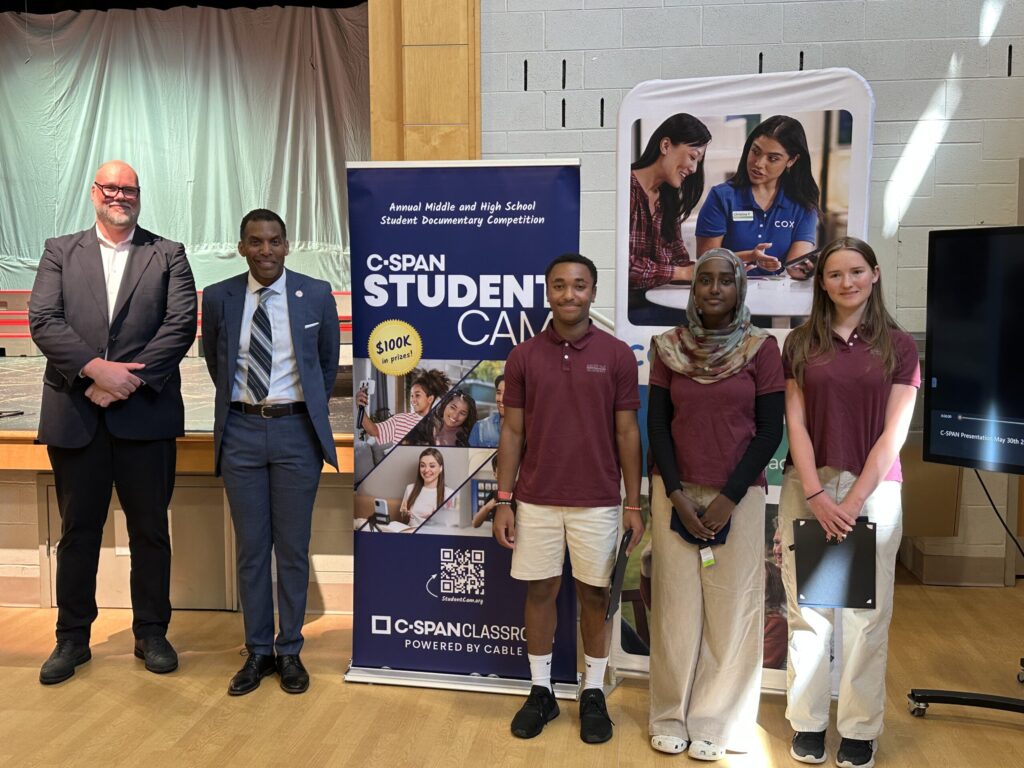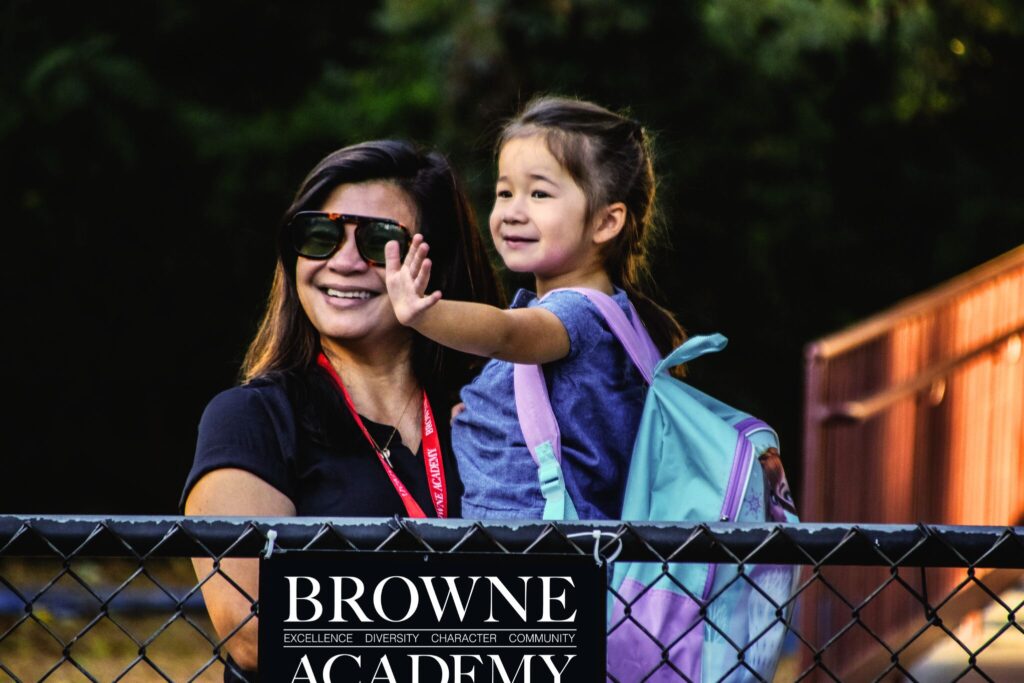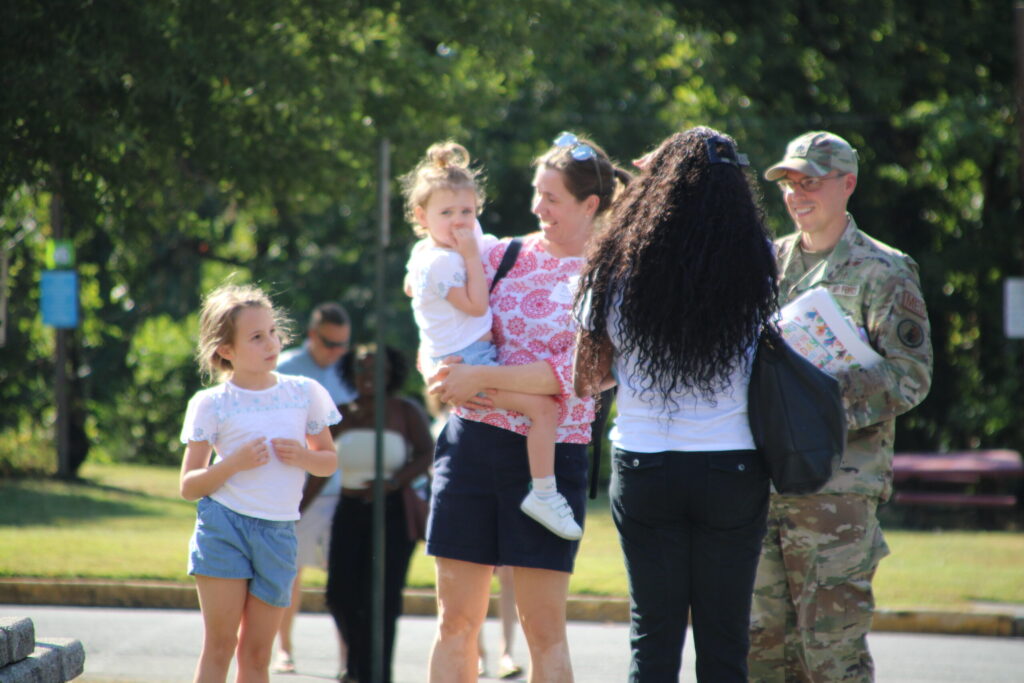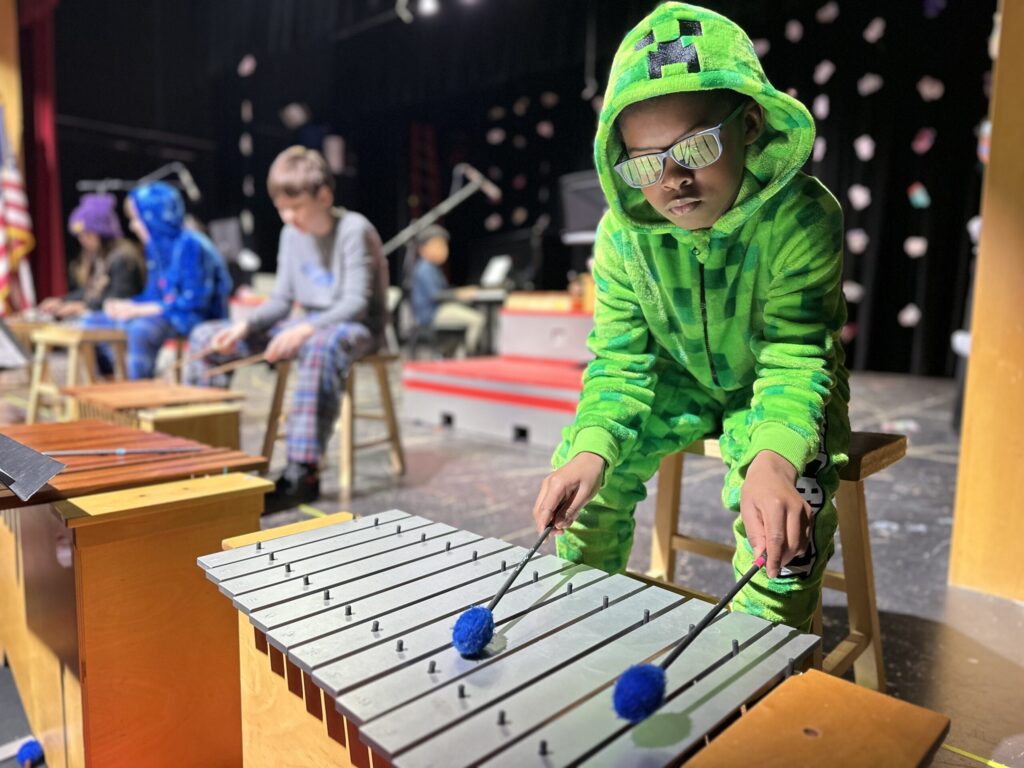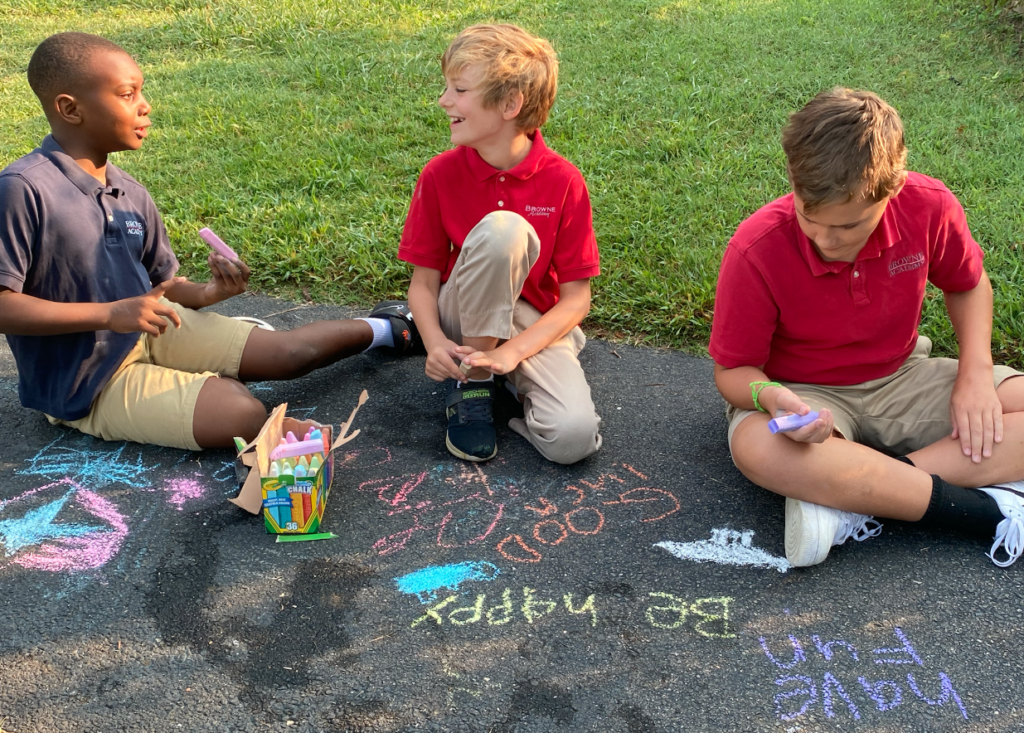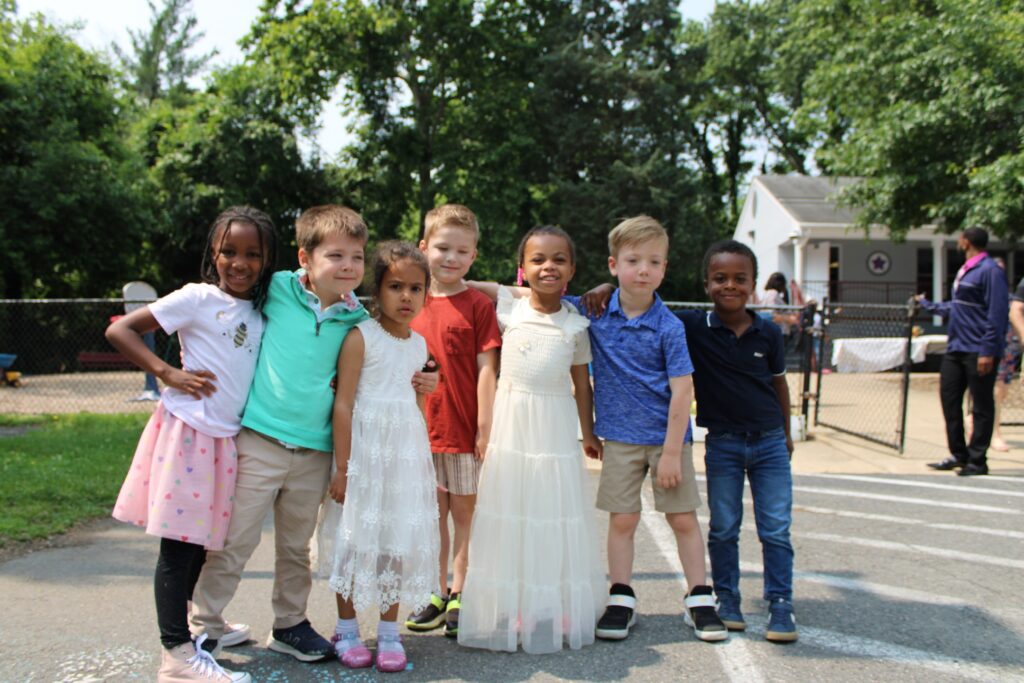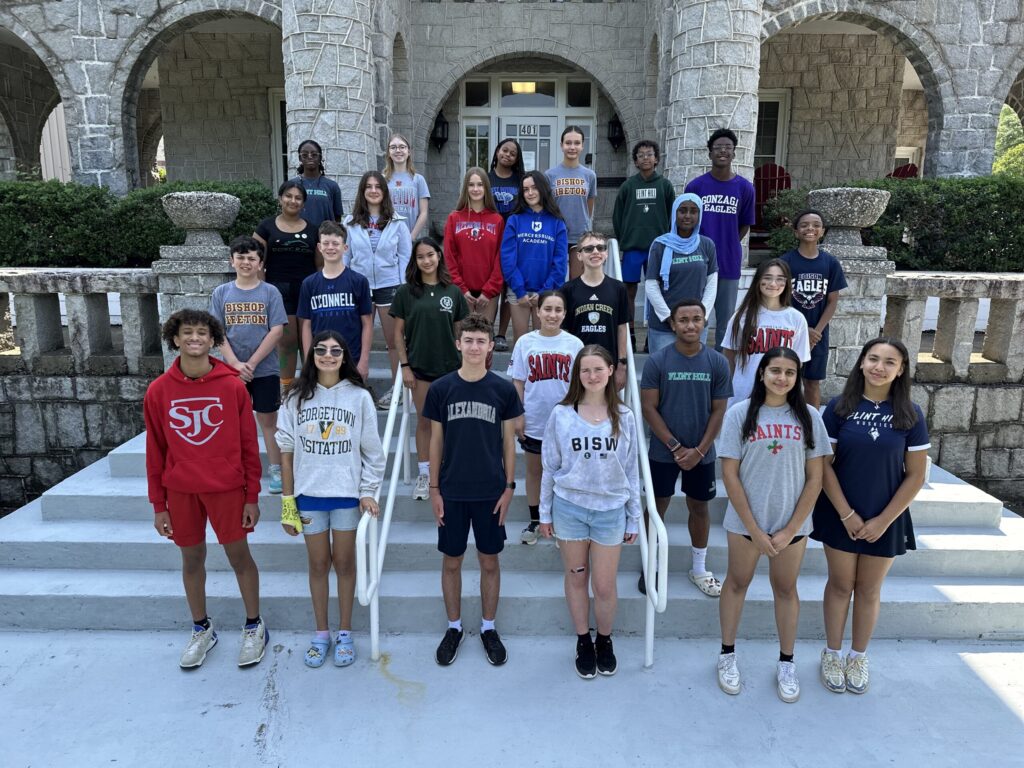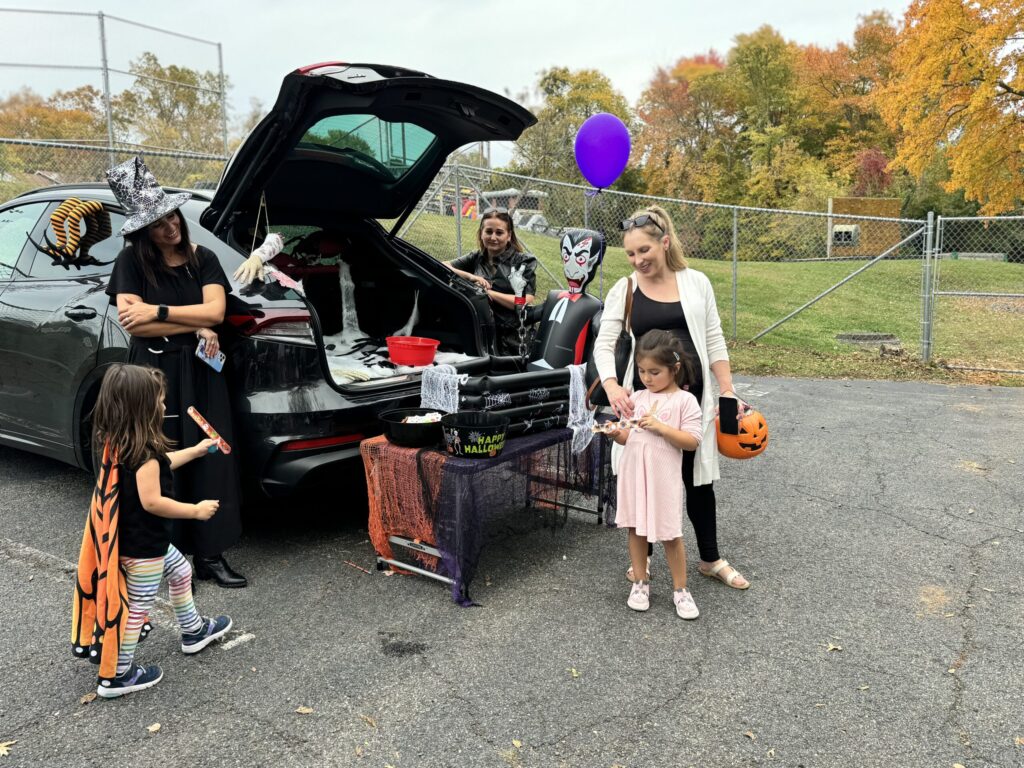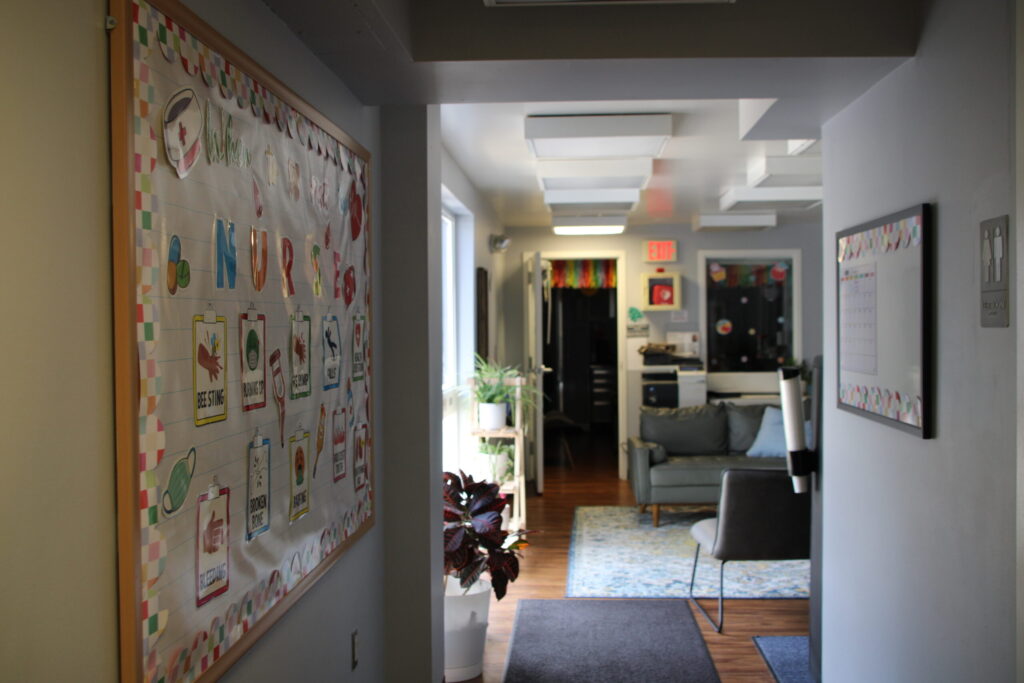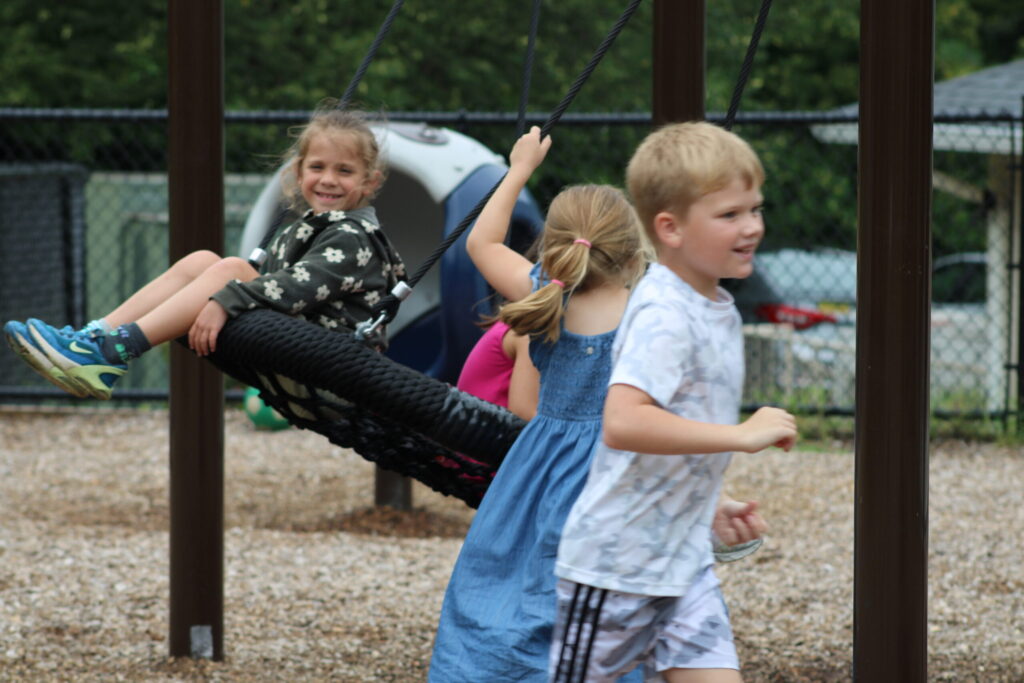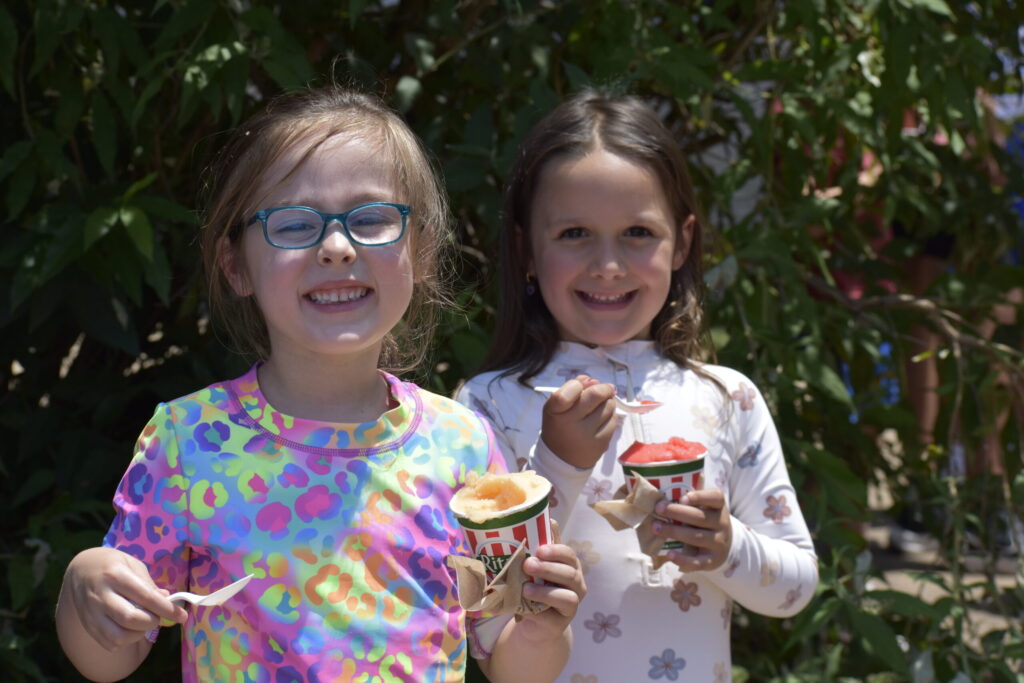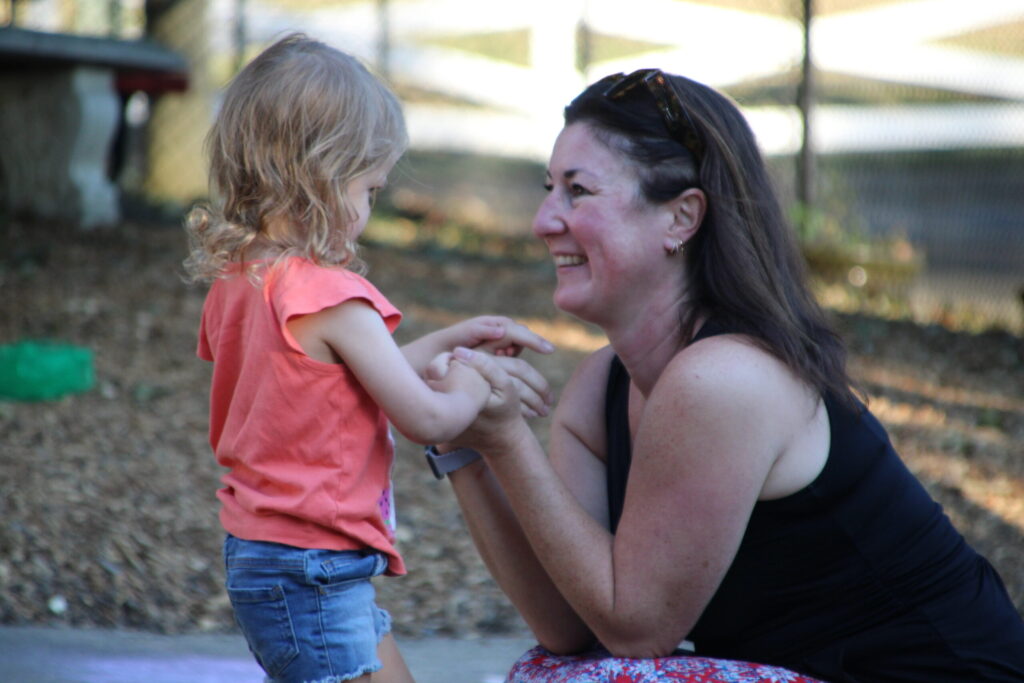Programs
Curricula
Browne Academy is committed to the preschool-8th grade experience and the academic, social and emotional foundation it provides our students. We deliberately focus our attention and resources to the years of childhood and early adolescence, giving time for students to mature and tap into their abilities while preserving their childlike sense of joy, wonder and curiosity.The continuity of teachers, classmates, programs and expectations provides a safe and nurturing learning environment, where children and young adolescents feel safe taking risks, developing leadership skills and exploring new possibilities.
Subject:
World Language
Browne Academy’s Spanish program is designed not only to expose the students to different languages and cultures, but also to increase awareness and respect for cultural diversity. Teachers engage students in age-appropriate, hand-on activities and projects, in which the children make connections across all disciplines. The curriculum emphasizes listening, speaking, reading, and writing, together with the practices and perspectives of the culture studied.
Spanish
The Lower School Spanish program lays a strong foundation of both language acquisition and appreciation of diverse cultures. Instruction in the Spanish language begins in preschool and builds as the students progress through fourth grade.
The Lower School Spanish curriculum introduces essential vocabulary and grammar through a comprehensive approach that includes speaking, reading, listening, and writing. A strong emphasis on dialogue, interactive activities, stories, and song ensures that students engage with the language and its cultural context in ways that are developmentally appropriate and enjoyable.
Social Studies
Our inquiry based and literacy rich social studies program engages and inspires students to investigate the stories of their community, state, and country. It helps them build deep social studies knowledge, develop critical thinking skills, and discover how they can contribute to our democracy. The inquiry process engages students’ drive to discover, their need to question, and their ability to create solutions that transform the world around them. The inquiry journey starts with a compelling question, moves through a rigorous investigation, and culminates in action. These questions are complex and meaningful, sparking curiosity and driving student learning. Inquiry isn't about filling in blanks on a worksheet. It requires research, conversations, and critical thinking. Students use their learning to take action and create solutions that affect the world.
Social-Emotional Learning (SEL)
The wellness of our children has never been more important. Our social emotional learning curriculum at Browne allows our students to acquire the skills and strategies they need to be as ready as possible for life. This is not just about knowing letters and numbers. It’s also about knowing how to learn and get along with others. Our Lower School SEL program teaches children about these concepts through both direct instruction, inquiry-based learning, play-based instruction, and organic conversations. SEL instruction throughout the Lower School builds in developmentally appropriate ways across the following four areas:
Science
The Lower School science program seeks to engage students in making discoveries about the world around them and prepare them for future scientific endeavors. By presenting a vertically integrated curriculum that provides students with increasingly refined and comprehensive knowledge of a wide variety of scientific concepts, students develop a passion for inquiry and learn to make the connections and discoveries that empower their growth. Our program emphasizes hands-on, collaborative learning, and covers a vast range of disciplines, including foundational biology, chemistry, physics, earth science, and more.
Science
Physical Education
At Browne Academy, regular physical education is critical to the development of a healthy, balanced individual. Students across grade levels engage in developmentally appropriate activities to enhance fitness, body control, and skill acquisition. Our lower school curriculum includes a diverse range of sports, including soccer, volleyball, basketball, floor hockey, pickleball, diamond sports, and frisbee, ensuring that students enjoy a well-rounded physical education experience. We strive to provide a sequential curriculum that is nurturing, child-centered, and taught in a positive environment.
Physical activity is vital for children's social, psychological, and emotional growth. We teach and reinforce social skills and personal responsibility through constructive feedback. Our physical education classes provide an ideal setting for students to learn appropriate social interactions, manage emotions, and cultivate essential personal responsibility skills. At all grade levels, a strong emphasis is placed on sportsmanship, teamwork, and effort. These components create a foundation that will lead to an enjoyment of regular physical activity and help to foster a healthy and positive lifestyle.
Our beautiful, eleven-acre campus offers ample opportunity for students to enjoy the outdoors. Students utilize the swimming pool, soccer and archery fields, and basketball court in addition to the indoor gymnasium in our spacious Center for the Appreciation of Performing Arts (CAPA).
Physical Education
The main goal of our Middle School Physical Education program is to create a welcoming environment where every child, regardless of athletic ability, can find a way to thrive. Browne Academy follows a curriculum loosely based around team sports, where the focus is learning cooperation, teamwork, and sportsmanship while engaging in physical activity and fitness. The major sports covered are soccer, flag football, volleyball, basketball, floor hockey, paddleball, handball, ultimate Frisbee, kickball, wiffle ball, softball, tennis, lacrosse, swimming, and archery. As the students grow older and their sport-specific skills improve, the emphasis in class turns to defensive and offensive strategies and higher level thinking about the game as a team.
Throughout the year, students have a chance to individually work on their personal goal setting with the teachers’ daily fitness warm-ups. The variety of these exercises challenges students in as many different aspects of physical exertion as possible to help everyone find an element of fitness they can enjoy. Middle School students also take health classes with our school nurse and guidance counselor, helping them navigate adolescence and become informed decision-makers about their physical and mental health. Highlights of the middle school physical education program include swimming for fifth through eighth graders and the end-of-year field day, where middle schoolers participate in events and challenges while embracing the spirit of friendly competition.
Music
The Lower School Music program prepares students to be lifelong musical people. By focusing on many aspects of music education, students become well-rounded in their musical experiences. These include developing a healthy head voice, performing steady beats and rhythms independently and then as part of an ensemble, moving expressively to the form and emotional response to music, moving with others to folk dances, music history, reading notation, composition, improvisation, recorder, percussion instruments, and performing. Students also explore and respond to music from American folk and popular songs as well as songs from many different time periods, genres, cultures, and decades. Students also have many opportunities to connect their classroom instruction to music. Students have created jingles for their own businesses, theme songs for fairytales as well as using poetry to create their own songs. By the end of their lower school years, students can create their own tunes, dances, read many rhythms and melodic patterns and songs, be proficient at recorder and are ready to expand upon their musical creativity and instrumental skills in middle school.
Music
Browne Academy recognizes the significance of the fine and performing arts and has a robust music program that engages, educates, and empowers. Browne’s music curriculum, both during the school day and through extracurricular opportunities, is designed to deepen knowledge and appreciation of music through interactive exercises in music history and dramatic arts, vocal and instrumental performance, and dance, with music theory supported by the developmental approaches of both the Orff Schulwerk and Kodaly methods. Each year builds upon teachings from the previous year.
Art
Browne Academy students work in a developmentally appropriate, visual environment with many available resources. Learning will include Principles of Art, Elements of Design, and Art History. Students create art that will connect to and reinforce grade level studies. Through inquiry based learning, students will be introduced to a wide variety of materials and media as they solve problems that use individual expression and creativity, and that incorporate our core values.
Math
Our lower school mathematics program highlights problem-solving as the focus of learning. Students are guided through concepts using the Math in Focus curriculum. This program is rooted in Singapore Math, an approach to instruction designed to instill a depth of knowledge about core math competencies. Teachers use the Concrete-Pictorial-Abstract (CPA) method of teaching, which facilitates a progression from physical manipulatives to visual models and diagrams, before working with mathematical symbols and operations. This CPA approach effectively scaffolds skills and concepts, anchoring learning in practical, real-world experiences. Students not only learn "how" mathematical concepts work, but also “why.” Instruction is also differentiated by student need in order to ensure all students are able to access the curriculum and succeed in math.
Teachers in the Lower School incorporate direct instruction, collaborative group work, and project-based learning in daily lessons. Students cultivate critical-thinking skills, develop a positive mathematical mindset, and gain the confidence necessary for achieving mathematical success. Instruction involves ample discussion opportunities for students, enriching the students’ relationship with math and boosting their ability to talk about mathematical concepts and strategies. The goal of the Lower School math program is to instill critical thinking and problem-solving skills along with a solid foundation in key math concepts that will set students up for success as they progress in school.
Math
Our fifth through eighth grade math program focuses on developing students' understanding of complex mathematical concepts through a structured curriculum. In fifth grade, students work with numbers up to 10,000,000 and deepen their understanding of core skills such as multiplication, division, fractions, decimals, geometry, and measurement. Students continue to develop real-world problem-solving skills that hone their critical thinking abilities. Sixth graders build upon these foundational skills, exploring operations with fractions, decimals, and percentages, and engaging in hands-on projects like the Spring Probability Carnival. The Algebra 1 course spans seventh and eighth grades, allowing students to progress at a developmentally appropriate pace. In seventh grade, our students learn about variables, expressions, and real-world applications. Eighth graders dive deeper into linear equations, inequalities, and quadratic equations, emphasizing critical thinking and problem-solving skills. The curriculum’s goal is to grow mathematical confidence and prepare students for advanced high school courses. Instruction is differentiated in order to ensure all students find success within the program.
Language Arts
Throughout the lower grades, students build literacy skills that will grant them access to the world around them. A combination of multi-sensory teaching, games, targeted instruction, and independent practice ensures the mastery of skills while simultaneously helping students fall in love with reading and writing. Teachers pair whole-group instruction with small-group and one-on-one settings in order to ensure each child receives the foundational instruction they need for success. Our students become autonomous readers and writers, as they are able to use their own interests and background knowledge to apply what they are learning at school.
Lower School teachers use the Open Court curriculum for foundational skills. This program is based in the Science of Reading and is both research-driven and research-validated instruction that is engaging and developmentally sound. Our literacy instruction is solidly rooted in phonics and helps students make sense of the many ways the English language works. Targeted phonological awareness instruction helps students become strong decoders and great spellers, boosting their confidence as they tackle new reading and writing challenges.
Lower School teachers believe in the power of stories, ensuring students are reading and are read to every day across the curriculum. Students learn to discuss what they are reading and writing through daily structured conversations. These discussions deepen comprehension and understanding while helping students access and respect different viewpoints and opinions. Students engage in peer-editing and regularly collaborate with one another, deepening their connections and appreciation for diverse ways of thinking.
Our literacy instruction is solidly rooted in phonics and helps students make sense of the many ways the English language works. Targeted phonological awareness instruction helps students become strong decoders and great spellers, boosting their confidence as they tackle new reading and writing challenges. From making predictions and rhyming, to rewriting fairy tales and sharing scientific observations, our students become empowered and effective readers and writers in the Lower School.
Innovation
The intention of the Innovation Center at Browne Academy is to teach and foster creative learning and collaborative skills that will benefit all students, not only while they are students here but long after they graduate. Our VEX coding program provides students with a familiar and scaffolded program that allows the children to start with basic block coding and move their way up to C++ and Python in middle school . Cross-curricular projects with classroom teachers, as well as other specialists, enhance learning objectives and give students the unique opportunity to create real life solutions based on their newfound knowledge. The design thinking process is integral in the innovation curriculum at Browne Academy. Students achieve success in engineering, designing, prototyping, coding, sewing, and 2-D and 3-D fabrication, all while learning that there is a purpose and reason behind everything they create.
Information Literacy
The library curriculum is designed to introduce young children to the world of books, reading, and libraries in an engaging and developmentally appropriate way. Our curriculum aims to foster a love of books, promote early literacy skills, and encourage a sense of curiosity and exploration. Information literacy for kids is a critical skill set that helps children develop the ability to find, evaluate, and use information effectively and responsibly. It empowers them to navigate the digital age with confidence, enabling them to make informed decisions, complete school assignments, and become responsible digital citizens.
History
English
Our fifth through eighth graders are guided through an English curriculum that is closely interwoven with history. Teachers provide cross-curricular studies that bring the humanities to life through historical and cultural lenses. Students use classic literary works, primary sources, historical texts, and culturally relevant newer novels to gain diverse perspectives and develop critical thinking skills.
Our older students grow remarkably as writers, becoming more confident in grammatical structure, writing mechanics, and written composition. Students engage in a variety of writing styles and genres, helping them develop their authentic voice. Inquiry, active listening, and respectful debate act as the basis for classroom activities and prepare our students for the high school experience.
Electives
Art
Students in lower school arts classes are introduced to the basic elements and principles of art. Their exploration begins with elements like color, line and form and progresses to a more complex study and execution of principles like unity, balance and emphasis. Students are introduced to classical and contemporary artists. Current events, and popular culture are also an important part of the arts program. Art history, integration of grade level studies, and creative experiences in the classroom are important along with developing an aesthetic sense, taking risks with creative expression, and understanding the visual world.
8th Grade Capstone
The 8th grade Capstone project provides students with the skills necessary to negotiate the challenges of twenty-first century learners in a global, interconnected community. Students increase personal knowledge of current events locally, nationally and globally. Using the Design Thinking Model, students select a topic on which to conduct in depth research. The process includes a research paper which defines a “problem” identified with their topic, a solution to the problem, and ideas for a prototype that could potentially solve the problem. A first person interview is conducted by each student with an expert in the field of their chosen topic. Throughout the project, eighth graders learn how to be experienced writers, critical thinkers, public speakers, and skilled researchers.
The culmination of the Capstone project are individual presentations given to families and members of the Browne community, which includes a slide presentation and a question and answer session.
5th Grade Spanish
The 5th grade Spanish program focuses on basic vocabulary using the four language areas: listening, speaking, reading and writing combined with culture. The classes meet four times in a six-day rotating schedule. Major themes in the 5th grade are related to their personal life including greetings and responses, introduction of others, expressing origin, likes and dislikes, descriptions, and clothing. Students focus on the interpersonal, interpretative and presentational modes using authentic resources and incorporating technology throughout the year. Students are evaluated in individual and group activities to provide social interaction combined with real-life situations. Field trips and special cultural activities add a unique richness to the program.
6th Grade Spanish
The 6th-grade Spanish program focuses on complex vocabulary about less familiar topics. In class, students use the four language areas: listening, speaking, reading and writing combined with culture. Students use authentic resources, while they engage in personalized real world tasks. Classes meet four times in a six-day rotating schedule. Major themes in the 6th grade are related to their personal life including greetings and responses, introduction of others, expressing origin, likes and dislikes, descriptions, and clothing. Students focus on the interpersonal, interpretative and presentational modes using authentic resources and incorporating technology throughout the year. Students take the National Spanish Exam Prep Level 01. Field trips, guest speakers, and special cultural activities add a unique richness to the program.
7th Grade Spanish
In 7th grade Spanish, students cover the first half of high school Spanish 1. By reinforcing and solidifying the four language skills: listening, speaking, reading, writing as well as incorporating culture, the students are given the tools needed to be successful in high school level Spanish courses. Major themes in the 7th grade are related to sports, weather, community, travel, and shopping. The topics include community places, directions, transportation, ordering food, discussing plans, sequence of events, extending invitations, expressing feelings, making comparisons, and forming opinions. In addition, a variety of technology resources are used and hands-on projects conducted to enhance student learning and proficiency. Students also take the National Spanish Exam, which compares their progress to other students across the country. Field trips, guest speakers, a variety of cross-curricular projects, and special cultural activities add a unique richness to the program.
8th Grade Spanish
The 8th grade Spanish program covers the second half of high school Spanish 1 and focuses on mastery of the skills necessary to be successful in high school level Spanish courses. To achieve this objective, students continue reinforcing and solidifying the four language skills: listening, speaking, reading, writing as well as culture. Major themes in the 8th grade are related to routines, city, country, immigration, and future life. Students learn to communicate about past activities, their daily routines, and chores; form persuasive arguments; make suggestions; and describe professional and personal goals. In addition, a variety of technology resources are used and hands-on projects conducted to enhance student learning and proficiency. Students also take the National Spanish Exam, which compares their progress to other students across the country. Field trips, guest speakers, a variety of cross-curricular projects, and special cultural activities add a unique richness to the program.
Preschool/Junior Kindergarten
Preschool and Junior Kindergarten students attend Spanish class every other day, ensuring regular interaction with the curriculum. Students engage in a variety of foundational learning experiences that include identifying primary and secondary colors, recognizing different animals, and counting numbers from one to ten. They will also learn to differentiate shapes and distinguish objects using opposites. Additionally, students will explore feelings and identify various parts of the body, enhancing their understanding of both the world around them and their own physical selves.
Kindergarten & 1st Grade
In Kindergarten and First Grade Spanish, students will learn concepts and vocabulary related to understanding the world around them. Students explore foundational language skills anchored in greetings, calendar concepts, the weather, likes and dislikes, and their own body and clothing. Students engage in classroom discussions and projects that boost their confidence and ability to communicate in Spanish. Kindergarten students work with their Fourth Grade buddies to study Monarch butterflies. This cross-curricular unit allows students to engage with vocabulary and grammar in a real-life context while building a strong sense of community within the Lower School.
2nd - 4th Grade
Students in second through fourth grade engage in a variety of Spanish learning activities that enhance their language skills and ability to communicate about the world around them. Concepts and vocabulary focus on personal characteristics, likes and dislikes, the school day, and the communities students belong to. Grammar becomes more of a focus in these grades, with students learning about plural nouns, verb tenses, pronouns, sentence structure, and pronunciation and accents. As in the earlier grades, Spanish instruction in Second through Fourth continues to be centered in dialogue and hands-on activities. Increased conversation happens as the students grow, preparing them for their move to Middle School Spanish. As one of their culminating projects, Fourth Grade students collaborate with their Kindergarten buddies on a study of monarch butterflies. This unit reinforces language and cultural concepts learned throughout Lower School, while allowing the fourth graders to build leadership and communication skills.
Preschool & Junior Kindergarten
Academy’s core values of excellence, diversity, community, and character build the foundation of our social studies program. We give the children their first sense of community outside the home. Social studies understanding begins as the children make friends and participate in decision making inside the classroom. Our curriculum includes learning about ourselves, community helpers, different modes of transportation, and our own families as we discover the importance of everyone within our society. We focus on how we are different and how we are alike and how every individual is unique. We learn social studies concepts by observing what is around us. We provide a caring community with an orderly routine, and each child is valued as an individual. Everything in the classroom lends itself to the concepts of social studies. As children learn to deal with emotions and resolve conflicts, they gain confidence and their social skills develop. Our program helps children develop a sense of personal responsibility, learn to share, take turns, and practice being both leaders and followers.
Inquiry Units:
Navigating School- How can we make school a great place for everyone? Students need to understand the places and people around them to thrive at school. In this unit, students explore their roles at school, investigating how they can make choices that will make school a great place for themselves and those around them.
My Team and Self - How can we unite to build a powerful class community? Successful teams can do just about anything! However, to understand what a team can accomplish, students need to understand who makes up the team and how those individuals can work together. This unit explores essential elements of personal identity to help students recognize how they can contribute to their class community and their own learning in amazing ways.
Past, Present, and Future - How can people use wisdom from the past to build a better future? Understanding past experiences and how memories shape people is integral to planning for the future. Students explore concepts of time and memory, discovering and sharing stories and memories that have helped them learn and grow.
The Inquiry Journeys social studies curriculum maximizes student learning through inquiry, supports culturally responsive education, and uses accurate and authentic sources from diverse authors and creators.
1st Grade
Inquiry Units:
Families Near and Far - How can we bring families together to form stronger communities? Families take many forms; there's no single definition. In this unit, students identify the roles and responsibilities that contribute to a family. They explore what makes their family unique and the differences they may encounter among different families and cultures.
Our Special Location - How can we help others appreciate our special location? Geographic location shapes who we are and how we live. During this unit, students investigate how location and climate shape daily life, and how goods and services meet community needs.
Civic Engagement - How can we work together for the good of the community? It is never too early to engage in civic life. In this unit, students explore different forms of participation and investigate key civics topics such as rights, fairness, responsibilities, rules, and laws.
2nd Grade
Inquiry Units:
Meeting Needs and Wants - How can we work together to meet community needs and wants? Communities are created to meet our common needs. In this unit, students are introduced to the concepts of needs and once, scarcity and abundance, the ways that producers and consumers interact, and how individuals and communities make choices about how to use their resources.
Our Changing Landscape - How can we respond to our changing landscape? Our relationship to the physical world begins with our own geographical location and the physical features of that location. In this unit, students explore access to and dependency on natural resources; how and why we modify the landscape; and the impacts that modifications can have on land, water, and living things.
Innovation- How can we innovate to improve the world around us? Innovation touches every facet of life - past, present, and future. In this unit, students consider how innovation changes society as a whole as they make their own blueprints for inventing a better world.
3rd Grade
Inquiry Units:
Global Connections - How can we act as global citizens? Is it possible to touch a country and its people without ever setting foot there? through the movement of people, goods, and ideas, students explore the geographic ways they are connected to distant places and the people who live there.
Migration and Movement- How can we honor and respect our many cultures? Throughout the history of the United States, immigration has played a large part in shaping our culture, politics, and economy. In this unit, students explore the timeless themes of immigration as they uncover the meaning and value of cultural identity.
The 20th Century Civil Rights Movement - How can we take steps toward equality and justice? All people in the United States have the right to equal protection under the law. In this unit, students use the lens of the Civil Rights Movement to investigate how citizens exercise their rights and responsibilities in our democracy.
4th Grade
Inquiry Units:
Natural Resources of the US - How should we use the natural resources of the United States? Each region of the United States is unique; together, they provide people with the different resources they need to survive. In this unit, students explore the rich natural resources across the US, how people use them, and the ways everyone can sustain them.
Our State's History - How can we help tell the story of our state? The historical roots of early state and local history are not buried, but alive in the artifacts and monuments around us, as well as in the stories that we tell. In this unit, students learn about the first peoples to live in their state and the major events of their state's history.
Economic Choices - How can we make economic decisions that positively impact our own lives and communities? Throughout our lives, the economic decisions we make affect us and others in our community in profound ways. In this unit, students explore their roles as consumers, producers, and economic decision-makers.
All Grades
1. Skills for Learning - Children gain skills to help them be better learners, including how to focus their attention, listen carefully, and ask for help. They build an understanding of the growth mindset, helping them reframe challenges as opportunities and see themselves as life-long learners. Children are taught to recognize the role they have in their own success at school and how they can take responsibility over their own learning.
2. Empathy - Children learn to identify and understand their own and others’ feelings. This allows them to build connections and see things from another person’s perspective. Children also learn how to show care for others through an emphasis on concepts like community, diversity, and compassion.
3. Emotion Management - Children learn how to calm down when they have strong feelings, such as worry or anger. They learn to notice what emotions feel like in their bodies and how to manage them, even as they become more complex. Students learn the benefits of positive self-talk and explore a variety of self-regulation strategies that best fit their needs.
4. Friendship Skills and Problem Solving - Children learn how to make and keep friends and to solve problems with others in a positive way. These skills are applicable beyond the classroom and focus on navigating playground problems, taking personal responsibility, and being inclusive and accepting.
Preschool
The science program for the three-year-olds expands their “magical thinking” to make sense of their surroundings. This hands-on-activity-based program guides the journey of discovery. Teachers encourage children to describe activities with new words, use stories and show pictures, and sing songs. The children make connections and develop logical thinking; they experience and discover wonder and question themselves, all using their five senses. This interactive science experience provides opportunities that stimulate their curiosity through the use of models, collections, observations, and class experiments. This process allows the children to develop a method of problem solving and critical thinking. The children also learn to care for their class pets!
Junior Kindergarten
The science program in the junior kindergarten class provides opportunities that stimulate curiosity and encourage learning as the students discover, question, and experience. The program is based on hands-on activities that revolve around our two major themes: change and environment. Within each theme there are several units, such as magnets, seasons, senses, plants, and animals. Browne is located on an 11-acre campus complete with wooded areas and a stream, which are used extensively for environmental education.
Kindergarten
The kindergarten science program provides opportunities for children to discover, experience and question many aspects of their natural world. Our curriculum is an introduction to many science concepts that will be further developed over time. The students learn through exploration and "hands-on" experiments as well as interactive technology based lessons. The inquiry units at the kindergarten level include "Doing Science," Animals, Weather and Seasons, The Earth’s Resources, Matter, Plants and the Rainforest. The goal of the program is to develop an awareness and appreciation of our physical surrounds and stimulate interest in scientific studies.
1st Grade
The 1st grade science program builds off of the kindergarten experiences. As students begin to use the scientific method, they unpack units that include How Scientists Work, Technology All Around Us(engineering), Animals, Plants, Environments, Objects in the Sky, and All About Matter. Each unit incorporates concepts into skill-area development through creative, predominantly inquiry-based, hands-on investigations; integrative technology; and project-based learning. Students in this grade are introduced to scientific investigation vocabulary such as observation, hypothesis, and drawing conclusions.
2nd Grade
The love of science continues to grow and flourish in the 2nd grade through hands-on and inquiry-based learning experiences within several high interest topics. Areas of study include Changes in Matter, Weather, Earth Changes, and The Solar System. A particular favorite is the study of Force and Motion, a cross-curricular unit that teaches students to write a lab report and provides opportunities for individuals to create their own experiments to test Newton’s Laws of Motion.
3rd Grade
Third grade science continues to build on the concepts presented previously, as well as some new and exciting areas of study. Big ideas include a first look at the engineering process, an introduction to some more advanced scientific tools (such as microscopes) and a closer study of how scientists measure size, mass, and volume. Outer space is an extremely popular topic at this grade level, and students embark on in-depth projects involving individual planets, as well as the latest developments in space travel and technology.
4th Grade
The fourth grade science program is designed to build on and deepen inquiry and STEAM skills. Science units include the Engineering Process; Plants and Animals; Energy and Ecosystems; Weather; Electricity; and Motion. Students perform numerous hands-on lab experiments and maintain a science journal documenting their learning. In conjunction with what is being learned in the classroom, students also often visit the school’s Innovation Center, where they design and create prototypes using a variety of materials. Field trips to The Baltimore Museum of Industry and The Calvert Marine Museum augment the classroom work.
5th Grade
Fifth grade science focuses on life science and chemistry covering concepts introduced in younger grades in much greater depth. Students explore the scientific process, plant and animal cells, bacteria, the human body, classification, traits and mutations, adaptations, matter, atomic structure, and chemical reactions. Emphasis is placed on the research process, learning to write like a scientist, and communicating their findings orally. Hands-on experiments using laboratory equipment are conducted throughout the year to explore concepts and develop an understanding of the scientific process. Students continue to develop their scientific writing skills during laboratory activities when making a hypothesis, recording observations, collecting data, reporting evidence and drawing conclusions about their findings. Classes also take advantage of our 12-acre campus for field studies and of the local community for field trip opportunities.
6th Grade
Sixth grade science explores geology and processes that shape our planet. The year begins by taking a deeper look at water and the water cycle. Students develop an understanding of how water shapes the earth and its importance in our lives. Students visit the Alexandria Renew Water Treatment Plant to experience the wastewater treatment process on a large scale. Back at school, students are tasked with building their own water filters. In addition, students investigate erosion and deposition, and water-formed features using model stream tables. Students also explore dams and hydropower, concluding with a field trip to the Conowingo Hydroelectric Power Plant. From there, we study the rock cycle, rocks and minerals, plate tectonics, volcanoes, and earthquakes. There are many opportunities for students to engage in collaborative work, hands-on lab experiments, and research projects throughout the year. The year concludes with an investigation of earthquake resistant structures. Students research earthquake resistant building techniques, create a scale model blueprint of their design, and build their model to test on our earthquake simulator.
7th Grade
Seventh grade life science introduces students to formal lab writing through inquiry, investigations and labs. Students will hone observational and scientific writing skills while examining biology on a small scale—microbiology, cell processes and genetics—and apply concepts to larger scale studies of living things. All 7th grade students will grapple with the scientific method by conducting an original experiment for Browne’s annual Science Fair. The latter half of the academic year, students undertake a field studies experience that examines the ecology of their local environment by collecting and compiling data, as well as visiting nearby field sites. The concept of bioethics will be explored in the context of evolution and natural selection. Skills built in seventh grade will be further honed and refined in 8th grade physical science.
8th Grade
Eighth grade physical science builds upon inquiry and writing skills introduced in 7th grade and further hones the scientific method as an ongoing process. Students will build greater foundational knowledge by examining matter at an atomic level, periodic table trends, basic chemistry and then a major unit on energy and light. A focus of the year will be inquiry and independent learning. To support this, the year will be structured around the summer reading of “The Martian.” The concepts taught throughout the year will be reinforced through examples from the story. The year will culminate with explorations in foundational physics in preparation for rigorous college preparatory high schools.
Preschool
Physical education at Browne is a curriculum rooted in learning through play. Our youngest learners embark on a journey to improve their gross motor abilities, learn simple sport-specific skills, and develop a basic understanding of sports formats. Our primary goal is to create a fun and inclusive environment where every child can thrive physically and socially while developing an early appreciation for physical activity and sports. Throughout the year, preschool students improve their gross-motor control and physical abilities while gaining exposure to fundamental sport-specific skills and concepts. Whether it is learning to kick and gallop in soccer, bounce a balloon on a paddle in pickleball, or run bases in order during a game of t-ball, our preschoolers develop positive attitudes towards physical activity and sports.
Junior Kindergarten
Physical education at Browne is a curriculum rooted in learning through play. Our Junior Kindergarteners improve their gross motor abilities, learn simple sport-specific skills, and develop a basic understanding of sports formats. Our primary goal is to create a fun and inclusive environment where every child can thrive physically and socially while developing an early appreciation for physical activity and sports. Throughout the year, preschool students improve their gross-motor control and physical abilities while gaining exposure to fundamental sport-specific skills and concepts. Whether it is learning to bounce and catch a basketball, dribble and pass with a hockey stick, or bounce a balloon on a paddle in pickleball, our Junior Kindergarteners develop positive attitudes towards physical activity and sports.
Kindergarten
In this lively course, young learners will embark on an exciting journey to improve their gross motor skills, learn simple sport-specific skills, and develop a basic understanding of sports formats. Our primary goal is to create a fun and inclusive environment where every child can thrive physically and develop an early appreciation for physical activity and sports. At the conclusion of this course, kindergarten students will have improved their physical abilities and gained exposure to fundamental sport-specific skills and concepts. We aim to instill a lifelong love for physical activity and sports in our young learners. We look forward to an active and enriching experience in Kindergarten Physical Education!
1st Grade
At Browne, our physical education curriculum is rooted in the idea of learning through play. Our primary goal is to create a fun and inclusive environment where every child can thrive physically and develop an early appreciation for physical activity and sports. Our first graders work to improve their gross-motor control, learn simple sport-specific skills, and develop a basic understanding of sports rules and formats. Students work on targeted skills in a diverse array of sports. Skills include proper form for throwing and catching balls, developing control with a hockey stick, forehand and backhand swings in pickleball, and more. Regardless of the sport, first graders work on communication with teammates, sportsmanship, and the habits needed to foster a healthy and positive lifestyle.
2nd Grade
At Browne, our physical education curriculum is rooted in the idea of learning through play. Our primary goal is to create a fun and inclusive environment where every child can thrive physically and develop an early appreciation for physical activity and sports. Our second graders work to improve their overall physical fitness while learning simple sport-specific skills and developing a basic understanding of sports rules and formats. Students work on targeted skills in a diverse array of sports. Second graders begin to add to the foundational skills learned in previous years. Improved dribbling, fleeing and dodging opponents, and defence are all focuses within the curriculum. Regardless of the sport, second graders work on communication with teammates, sportsmanship, and the habits needed to foster a healthy and positive lifestyle.
3rd Grade
At Browne, our focus is on enhancing age-appropriate fitness skills, refining intermediate sport-specific abilities, deepening student understanding of sport-specific rules and formats, and fostering teamwork and sportsmanship. Through a combination of engaging activities and cooperative challenges, students will further their development as athletes and responsible, respectful teammates. Third graders work on targeted skills in a diverse array of sports. The curriculum builds on that of previous grades while covering a wide array of diverse sports. Instruction in third grade includes sport-specific skills like layups in basketball, stick handling in floor hockey, and throwing base-to-base in diamond sports. Regardless of the sport, third graders work on communication with teammates, sportsmanship, and the habits needed to foster a healthy and positive lifestyle.
4th Grade
At Browne, our focus is on enhancing age-appropriate fitness skills, refining intermediate sport-specific abilities, deepening student understanding of sport-specific rules and formats, and fostering teamwork and sportsmanship. Through a combination of engaging activities and cooperative challenges, students will further their development as athletes and responsible, respectful teammates. Fourth graders work to grow targeted skills in a diverse array of sports. The curriculum builds on that of previous grades, while covering a wide array of diverse sports. Instruction in fourth grade includes catching, throwing, and passing while moving in various sports. Fourth graders also work on court spacing and move to an eight-foot basket in basketball. Regardless of the sport, fourth graders work on communication with teammates, sportsmanship, and the habits needed to foster a healthy and positive lifestyle.
5th & 6th Grade
Our fifth and sixth graders attend PE together to build on the strong foundation of teamwork and physical fitness established in previous years. Students work to improve age appropriate fitness skills, learn advanced sport specific skills, and improve advanced concepts of sport specific rules and format. Exploration of offensive and defensive strategies grows students’ comfort and confidence with a variety of team sports. Our fifth and sixth graders also take Health and Human Development as part of their physical education curriculum. Classes are led by our school nurse and guidance counselor and cover topics related to physical, mental, and social health. The health curriculum is designed to help students navigate the changes and challenges of adolescence.
6th & 7th Grade
Our seventh and eighth graders attend PE together to build on the strong foundation of teamwork and physical fitness established in previous years. Students work to improve age appropriate fitness skills, learn advanced sport specific skills, and improve advanced concepts of sport specific rules and format. Students dive deeper into offensive and defensive strategies with a variety of team sports and begin exploring strength training targeting arms, legs, and core. Our seventh and eighth graders take Health and Human Development as part of their physical education curriculum. Classes are led by our school nurse and guidance counselor and address topics related to physical, mental, and social health. The goal of our health curriculum is to provide information to students so that they can make informed decisions about their physical and emotional health.
Preschool/Junior Kindergarten
- Develop the ability to sing, dance, play instruments and create music and movement
- Provide a research based, repertoire of multi-genre and cultural music that helps increase child’s aptitude for music
- Music lessons include listening to music while keeping the beat, moving to music to the form and feeling of the piece, developing a healthy head voice while singing, internalizing tunes and creating one’s own tunes, beat motion andfingerplays, playing percussion instruments, and being sung a story
- Direct instrument instruction teaches the proper technique for non-pitched percussion
- Preparation for a Halloween show, Winter Show, and Spring Show to showcase a thematic selection with the whole school
- Integrated curriculum approach celebrates each months heritage celebrations such as Hispanic Heritage Month, Native American Heritage Month, Black History Month etc. with music by artists from those cultures
- Direct vocal instruction, starting to understand head voice and belly singing
- A sense of fun and wonder with child-like enthusiasm to connect to a child’s natural sense of play and delight with music
Kindergarten
- Development of methods to engage tuneful, beatful, and artful skills and develop lifelong musicians
- Students begin to learn simple folk dances learning partner movement skills
- Students become more confident at creating their own songs through a variety of fun and engaging activities
- Students learn different SEL classroom culture goals that teach about proper respect for each other, performers, celebrating people of all cultures and backgrounds, being part of a musical community, empathy, and a growth mindset
- Students begin to explore pitched percussion instruments
1st Grade
- Students begin learning how to read notation with beat divisions of 2 and 3
- Students continue pitched percussion exploration with more concrete objectives such as going up and
down, adding steady beat to a poem or song, drones, ostinatos, and improvisation
- Students continue to build upon folk dancing skills from Kindergarten adding different formations and complex movements
- Students begin a more in depth exploration of music history with Peter and the Wolf, Swan Lake, and music from Brazil
- Students learn basics of ballet
- Students continue to become confident song creators using their own words and melodies
2nd Grade
- Students continue their study of notation adding the quarter rest and quarter eighth note patterns in 6/8
- Students add more complicated and student led ostinatos, canons, chord drones, passing games, improvisation, and multi-ostinato songs
- Students explore music careers with a jingle writing project for their business fair project
- Students explore music history units that lead them through opera and musicals, Native American folk songs, Hawaiian and Polynesian music, and english composers
- Students learn about the 4 instrument families and the elements that determine how instruments are categorized
- Students continue learning more complicated folk dancing songs
3rd Grade
- Students continue their study of notation adding do, re, and mi, question and answer melodies,
and different melodic forms
- Students add melodic improvisation to rhyme rhythms, melodies on pitched percussion, layered and melodic ostinatos, level drones, and body percussion in canon
- Students learn about the history of jazz and blues and create their own blues song
- Students explore music history units that cover french composers, American patriotic songs, Japanese folk songs, and American popular music from the 1950’s to today
- Students begin recorder study
- Students continue learning more complicated folk dancing songs
- Choir study begins with Junior Choir (3rd and 4th grade combined)
4th Grade
- Students continue their study of notation adding so, and half notes
- Students add elongated pentatonic melodies to pitched percussion, combining non-pitched percussion to pitched percussion songs, arpeggiated and moving drones, and ostinatos to orff studies
- Students explore African American poets and use poems to create their own songs
- Students learn about different genres of music
- Students continue learning more complicated folk dancing songs
- Choir study continues with Junior Choir (3rd and 4th grade combined)
5th Grade
Fifth Grade music students at Browne have the opportunity to explore musical elements using a variety of pitched and unpitched percussion instruments. Fun and engaging activities focus on music theory, sight-reading, improvisation, and composition skills and students develop listening skills through the creation of listening maps. The world music focus of this grade is the Middle East, Asia, and the Pacific Islands where students learn through primary source material and listening projects. They also hone their rehearsal skills while preparing for our two major concerts*, one in the winter and one in the spring.
*Concerts this year will be virtual until further notice with students producing video presentations of their musical learning to share with Browne families and community.
6th Grade
Sixth grade music focuses on refining music literacy, improving active listening skills, and gaining a deeper appreciation for the musical traditions of other cultures. The world music focus in this grade is Central and South America and the Caribbean. Students learn through primary source material and complete a project exploring pre-columbian instruments. Note and rhythm reading skills are emphasized daily with games and activities. Sixth graders express their creativity through composition projects, as well as learn to play the ukulele. All of these skills are showcased twice a year at both the winter and spring concerts*.
*Concerts this year will be virtual until further notice with students producing video presentations of their musical learning to share with Browne families and community.
7th Grade: Voices United
Seventh grade music is all about self-expression. Students review previous music literacy knowledge and dive deeper into how music notation, recording, and editing software empowers individuals to share their musical creations with larger groups of people. The world music focus for this year is the continent of Africa where students learn through primary source material and listening projects. Note and rhythm reading skills are put into practice during a bucket drumming unit where students create their own cadences. All of these projects are showcased twice a year at both the winter and spring concerts*.
*Concerts this year will be virtual until further notice with students producing video presentations of their musical learning to share with Browne families and community.
8th Grade: Voices United
Eighth grade music is the year of application. Students explore careers in the music and use the design thinking process to explore how music can be used to create positive change in the world. The world music focus for this year is Europe and American musical traditions. Students complete a folk music research project diving into their family’s musical history to unearth their own musical legacy. Students also examine what makes pop music “pop” and explore digital music production software to create their own “pop” song. All of these projects are showcased twice a year at both the winter and spring concerts*.
*Concerts this year will be virtual until further notice with students producing video presentations of their musical learning to share with Browne families and community.
Wind Ensemble
Wind Ensemble is open to all 7th and 8th grade students with playing experience on flute, clarinet, saxophone, oboe, trumpet, trombone, french horn, tuba, or percussion. This ensemble is a year-long elective course that builds upon previous music skills to improve individual rhythm and note reading as well as tone production and critical listening. This ensemble helps prepare students for high school band groups. Students in this group will also have the opportunity to audition for District Band, an honors ensemble with selected students from area middle schools. In addition to regular school performances, students in Wind Ensemble conclude the year with a combined performance at King’s Dominion theme park.
5th Grade
Fifth grade students explore a variety of activities including gesture drawing, proportion and symmetry, charcoal landscape drawing, and tessellations. They also explore the relationship between art and culture by creating Japanese kimono prints and Indian mandalas and work collaboratively with their history class with an in-depth study of Egyptian hieroglyphics and the creation of ceramic Egyptian Sarcophagi. Students have the opportunity to experience a wide variety of art media including pencil, colored pencil, charcoal, acrylic paint, watercolors, and ceramics, while developing technique in their own artwork.
6th Grade
Throughout the year, students in 6th grade art will participate in a variety of activities including contour drawing, ceramic relief carving, printmaking, gridded drawing techniques, and still life. They will study art history through the works of Picasso and Van Gogh and make connections between science and art with endangered species paintings and electron microscope art. Students will be given the opportunity to experience a wide variety of art media including pencil, colored pencil, acrylic paint, watercolors
7th Grade
Seventh grade art students participate in a variety of activities including one- and two-point perspective drawing, reduction printmaking, plaster casting, and collage. They will also study art history with an examination of Surrealism, collage artists such as Romare Bearden, and a study of Mexican Folk Art. Students will be given the opportunity to experience a wide variety of art media including pencil, colored pencil, charcoal, oil pastels, acrylic paint, watercolors, and plaster, and develop the techniques in their own artwork.
8th Grade
We believe that the Browne Academy art department ignites the artistic spirit in our students through the promotion of the aesthetic, collaborative and cultural significance of the arts. By embracing the backdrop of creativity, performance and hands-on experience, we enable our students to cultivate an understanding of themselves and the greater community. Throughout the year, students in eighth grade art will participate in a variety of activities including symbolic self-portraits, mixed media-collage, ceramic vessel-making, light box-building, and mural painting. They will also explore art history with a study of Frida Kahlo and Paul Gauguin and examine their personal identity with silk screen logos and collaged self-portraits. Students will be given the opportunity to experience a wide variety of art media including pencil, colored pencil, acrylic paint, watercolors, plaster and ceramics, and develop the techniques in their own artwork.
Graphic novels
Did you know that comics don't have to be about superheroes? Graphic novels, comics that tell an extended story, are more popular than ever, with artists like Raina Telgemeier and Cece Bell creating work specifically for the teen and pre-teen markets. Explore the history of graphic novels, study important works like Maus and Persepolis, and begin creating your own sequential art story. Students will practice skills such as composition, gesture drawing, and inking as they work through thumbnails and rough drafts to produce their own ten-page comic.
Math Art
Our Mathematical Art course is designed to give students the opportunity to create mathematical representations of and to appreciate the beauty in arithmetic, geometric, and algebraic patterns. The math and art connection is not always visible unless actively seeking it, so students will learn to look for their relationship in the work they do and beyond. Based on lessons in accessible mathematical relationships, students will create mathematical artwork using a variety of mediums.
Photography and Photojournalism
It’s time to share what’s important to you with the Browne Academy Community! The Paw Print Newspaper wants you to join them. You’ll learn how to cover events, conduct interviews, and dig into the stories that impact your classmates. You will also learn how to use a DSLR camera, process digital images, and edit digital layouts.
Preschool/Junior Kindergarten
In preschool and Junior Kindergarten, students engage in hands-on, play-based learning experiences. They explore foundational math topics like patterns, sorting, sequencing, one-to-one correspondence, graphing, and attributes. These essential skills are crucial for further mathematical development. Preschoolers learn to recognize and write numbers while developing number sense. Through play, they extend and create patterns, explore two-dimensional shapes, and measure using non-standard units. Junior Kindergarteners expand on the skills learned in Preschool, while still being rooted in exploration and play. Students explore concepts like addition and subtraction, real-world story problems, and three-dimensional shapes. Instruction focuses on the concepts of these skills to prepare students for success in Kindergarten.
Kindergarten & 1st Grade
For our young mathematicians in Kindergarten and First Grade, foundational concepts include number sense, addition and subtraction, attributes, measurement, time, and money. Kindergarteners learn to count, read, order, and write numbers up to one hundred. They focus on ways to make ten and begin to incorporate equations into their work with real-world story problems. Students are introduced to the Math in Focus curriculum that they will follow through sixth grade. First graders foster number sense by learning about place value, extending their understanding of number bonds, and using fact families to solve related math problems. Addition and subtraction with regrouping are introduced, as well as various strategies to solve mathematical problems with numbers through one hundred. Regular partner and group activities allow students to see diverse ways of thinking and problem-solving, as well as build their conceptual understandings.
2nd - 4th Grade
Second, Third, and Fourth graders engage in increasingly challenging math work in core skills and concepts. Teachers use hands-on, experiential learning alongside direct instruction, small groups, and partnerships to strengthen foundational mathematical understandings. Place value builds through the grades, from working with numbers through one thousand in second grade to numbers through one million in fourth grade. Real-world story problems also grow in complexity through the grades. There is a focus on multistep problems, heuristics, and basic algebraic concepts like missing addends, subtrahends, factors, and divisors. Students use a variety of methods and strategies to help solve problems and use bar models to help visually represent numbers and their relationships. Second graders are introduced to subtraction with regrouping, the concepts of multiplication and division, and begin working on basic multiplication facts. They also begin to explore concepts like lines and surfaces in geometry. Third graders build on this by adding and subtracting within 10,000, solidifying multiplication facts, and working with multidigit multiplication. Fractions and division by single digits are covered, as well as an exploration of angles, lines, and polygons. By fourth grade, students are multiplying and dividing with increased fluency. Students are introduced to geometric formulas through their study of area and perimeter and begin to understand the idea of balanced equations. Students add, subtract, and multiply fractions and mixed numbers, and work with decimals through hundredths. The Math in Focus curriculum in second through fourth grade aims to firmly ground students in mathematical concepts before introducing them to more abstract interactions with the material. Formal assessment includes computational work, heuristics, and open-ended, multistep real-world applications. Opportunities for reteaching and extension are incorporated in a variety of ways in order to allow differentiation based on student needs.
5th Grade
Fifth graders expand their mathematical understanding by working with numbers through 10,000,000. They expand on concepts covered in Lower School, ensuring a depth of understanding in core skills related to multiplication and division, fractions, decimals, geometry, and measurement. Rather than teaching these skills in isolation, instruction is cross-conceptual and spiraling. Students multiply and divide fractions and mixed numbers and learn to relate and compare fractions, decimals, and percentages. Fifth graders continue to use the Math in Focus curriculum to guide them through open-ended, multistep problems that allow them to interact with math in real-world situations. Students are introduced to coordinate planes and ratios in preparation for their sixth grade mathematical experience. Formal assessment includes computational work, heuristics, and open-ended, multistep real world applications. Opportunities for reteaching and extension are incorporated in a variety of ways in order to allow differentiation based on student needs.
6th Grade
Sixth graders build on the skills learned in prior years in order to prepare them for more complex algebraic thinking in the years ahead. Operations with fractions, decimals, and percentages are covered through both computational practice and real-world multi-step problems. Inverse operations and a study of integers adds depth to established number sense and mathematical competencies. Students interpret ratios and proportions, explore the probability of independent and dependent events, and interpret unknown quantities in mathematical situations. Formal and informal assessments happen frequently and include hands-on projects. One highlight of this is the Sixth Grade Probability Carnival put on each Spring. As a culmination of their unit covering theoretical, experimental, and compound probability, students put on a carnival for their Lower School peers with games and activities they create using the skills they have acquired.
7th Grade Pre-Algebra
Algebra 1 is split between seventh and eighth grade, allowing students to explore complex mathematical concepts at a developmentally appropriate pace. Critical thinking and problem-solving skills, as well as strong proficiency with whole numbers, decimals, and fractions, are imperative to success in seventh and eight grade math. Students begin Algebra 1 in seventh grade by understanding the role of variables and looking at the relationships between expressions and equations. Real-world problems are used as a basis for mathematical discussions, allowing students to understand both the how and why of concepts like rational numbers, absolute values, and ratios. Functions, linear equations, and graphs are introduced and then revisited in eighth grade. The goal of the program is to ensure students are applying skills and ideas to a variety of algebraic problems, in context, while continuing to hone higher level thinking and problem-solving skills. In 7th grade Pre-Algebra, students study the following units: The Language of Algebra, Integers, Measures of Central Tendency, One-Step to Multi-Step Equations, No-Solution Equations, Infinite Solution Equations, Absolute Value Equations, Proportional Reasoning and Probability/Odds, Functions and Graphs, Direct and Inverse Variation, and Linear Equations. The main goal of Pre-Algebra at Browne Academy is to not only prepare students for success in Algebra I, but also to apply the skills and ideas to a variety of problems in context. Strong proficiency with whole numbers, decimals, and fractions is imperative to success in Pre-Algebra and Algebra I.
8th Grade Algebra 1
Eighth graders complete the Algebra 1 course they began in seventh grade. Linear equations and graphs are reviewed before students start working in depth with inequalities, powers and roots, and polynomials. The course ends with the study of quadratic equations and radical expressions. Data analysis and graphing are used throughout the year, and students are encouraged to discuss and explore a variety of strategies and mathematical mindsets. The eighth grade curriculum is designed to lay the foundation for critical thinking and problem-solving skills that students will need as they move on to more advanced high school courses.
Preschool
Our youngest students are welcomed into a community that believes in the power, importance, and fun of reading and writing. Our preschoolers engage in playful learning activities that excite the young child’s mind and propel them on their journey toward learning to speak, listen, read, understand, watch, draw, and write. Literacy lessons foster print awareness, left to right progression, letter recognition, and interpretation of illustrations in order to understand the substance of a story. Teachers use the Handwriting Without Tears program to ensure correct pencil grip and provide explicit handwriting instruction. Designed by pediatric occupational therapists, this handwriting program is grounded in play-centered, developmentally appropriate, and engaging methods. The preschool is home to a beautiful, newly-refurbished library with an abundance of diverse books. Print-rich classrooms, play-centered instruction, and highly trained, caring staff set the foundation for our award-winning preschool program.
Junior-Kindergarten
Junior-Kindergarteners continue to grow a love of reading and writing through the highly-engaging, sensory rich language arts program. This integrated curriculum is designed to provide students with opportunities to understand, practice, and use early literacy skills. Direct phonics instruction focuses on consonant and vowel sounds, rooted in the Orton-Gillingham methods of language acquisition. Explicit handwriting instruction follows the Handwriting Without Tears program to ensure correct pencil grip and letter and number formation. Designed by pediatric occupational therapists, this handwriting program is grounded in play-centered, developmentally appropriate, and engaging methods. The Junior Kindergarten is home to a beautiful, newly-refurbished library with an abundance of diverse books. Print-rich classrooms, play-centered learning, and highly trained staff set the foundation for unmatched instruction and care.
Kindergarten
Kindergarteners take part in highly engaging, multisensory Language Arts instruction that sets the foundation for their journey as lifelong readers and writers. Teachers design lessons with diverse learners in mind, creating multisensory engagement that sparks a love of language. The Kindergarten language arts program pairs the Open Court Reading curriculum with best practices from the Science of Reading and the Orton-Gillingham method of language acquisition. Students begin learning letter sounds and digraphs, phoneme manipulation, and high-frequency words, realizing quickly that they truly are readers! Time is spent learning about books and how they are read, as well as foundational comprehension skills like comparing and contrasting, summarizing, and identifying key story elements. Students engage in independent work, collaborate with partners, and receive individualized attention from the teachers to establish strong reading and writing skills. They learn that their stories hold meaning and can be expressed creatively through pictures and words. Kindergarteners practice proper letter and number formation while strengthening their hands for writing through the Handwriting Without Tears program. From writing about their lives to collaborating with the local animal rescue shelter to create animal flyers, our young writers learn the power of their words.
1st Grade
First Grade is a time for remarkable growth in our readers and writers. Our teachers immerse students in a language-rich program centered around growing foundational reading skills and developing their written communication. Teachers follow the Open Court reading curriculum, which features three main components: foundational word analysis skills, reading comprehension, and writing. In first grade, word analysis involves intensive phonics instruction in consonants, short vowels, and digraphs. Students learn to blend words sound by sound and are taught the importance of checking word meaning to ensure they have blended words correctly. Phonemic sounds are taught systematically and aid in developing decoding and fluency skills for these budding readers. Students engage in independent work, collaborate with partners, and receive individualized attention from the teachers to establish strong reading and writing skills. They learn that their words hold meaning and can be expressed creatively through sentences and stories. Together with penmanship, grammar, usage, and mechanics are taught explicitly, laying a vital foundation for both narrative and informational writing. Students begin using graphic organizers and engage in peer-editing, strategies they will continue to use throughout Lower School.
2nd Grade
Lower School teachers follow the Open Court reading curriculum, which features three main components: foundational word analysis skills, reading comprehension, and writing. In second grade, word analysis involves blending multisyllabic words and increasing phonemic awareness of diphthongs, vowel digraphs, and trigraphs. Base words and affixes allow students to manipulate tense and find meaning in unfamiliar words. Students build reading fluency through daily oral language activities and phoneme manipulation. These skills are also practiced through dictation and written practice, enhancing spelling patterns and rules. Reading fluency and comprehension are a major focus in second grade. Students learn to reference texts when analyzing and discussing what they have read. A strong vocabulary component, along with daily comprehension work, ensures students are able to make sense of increasingly complex texts. Students engage in independent work, collaborate with partners, and receive individualized attention from the teachers to establish strong reading and writing skills. By studying writers’ craft and how writers organize their work, our second graders learn to apply these strategies to their own written pieces. As they move through the writing process with narrative and informational texts, students use graphic organizers to generate ideas and organize them into well-structured paragraphs. Second graders edit their work for grammar, usage, and mechanics while ensuring they consider their audience and match their writing to their purpose. Throughout the year, our second graders connect with professional writers and engage in virtual visits and read-alouds. The students love these opportunities to hear their favorite stories read by the people who wrote them and ask questions about the writing process. Authors share “tips” and encourage our second graders to truly see themselves as writers while continuing to foster their love of reading.
3rd Grade
Third grade literacy involves a careful blend of engaging materials, explicit instruction, and growing independence. Teachers follow the Open Court reading curriculum, which features three main components: foundational word analysis skills, reading comprehension, and writing. In third grade, word analysis involves blending longer words and increased understanding of orthographic devices. Students learn alternate spellings, homophones, irregular verbs, and abstract nouns. Students grow reading fluency, intonation, and expression through daily oral language activities. Written phoneme practice and word work enhance spelling rules and patterns and is part of the daily routine. Students are introduced to cursive in third grade, improving fine motor skills, limiting letter reversals, and increasing written speed. Reading fluency and comprehension are an ongoing focus in third grade. Students regularly reference texts when analyzing and discussing what they have read and begin to annotate their reading. A strong vocabulary component along with daily comprehension work, ensures students are able to make sense of increasingly complex texts. Clarifying information and making connections help hone students’ higher level thinking. Students engage in independent work, collaborate with partners, and receive individualized attention from the teachers to grow strong reading and writing skills. As our third graders move through the writing process, they generate and organize ideas into well-structured paragraphs. Third graders edit and revise their work for grammar, usage, and mechanics while ensuring they include rich detail, follow paragraph structure, and include important narrative or informational text components. Students consider point of view and genre when writing and use mentor texts to try a variety of writing styles.
4th Grade
Fourth graders enhance their reading skills, tools, strategies, and habits through the study of narrative and informational texts. Using the Open Court Reading program as a framework, the teachers utilize diverse resources, including novel studies, student anthologies, and curated articles and books to enrich the students’ experience with Language Arts. The Open Court curriculum features three main components: foundational word analysis skills, reading comprehension, and writing. In fourth grade, word analysis focuses on essential topics like base words, Greek and Latin roots, and inflected endings. Students use these skills, as well as morphemes and affixes, to determine the meaning of words, grow their vocabulary, and hone their spelling skills. In addition to solidifying vital reading skills and fluency, fourth graders also begin to analyze complex texts independently. They work regularly to make inferences and predictions, use context clues to determine the meaning of unfamiliar words, understand figurative language, and summarize and reflect on what they have read. Through evaluating and interpreting teacher-curated texts, students grow the skills and confidence they need as they move into the middle grades. A highlight of the fourth grade language arts program is collaborating virtually with professional authors, including Ellen Potter. Through the authors’ guidance, students learn about the writing process and practice writing skills. They are even able to share their work and receive valuable feedback and encouragement from some of their favorite authors!
Kindergarten
- VEX 123 robotics program
- Design Thinking Cycle Introduction
- Cardboard Prototype Design
- Destination Imagination Early Learning integration
- Engineering Solutions in our classroom
- Kindergarten Jam Session: research, design, and build instruments
1st Grade
- VEX 123 robotics program
- Design Thinking Cycle
- Cardboard Prototype Design
- Destination Imagination Early Learning integration
- Engineering Solutions in our school community
- First Grade Play: script writing, scenery and prop creation, videography, and editing
2nd Grade
- VEX 123 robotics program
- Introduction to VEX GO robotics program
- Design Thinking Cycle
- Prototype fabrication with recycled and sustainable materials
- Engineering Solutions in our personal lives
- Business Fair: Stop motion animation and logo design
3rd Grade
- VEX GO robotics program
- Design Thinking Cycle
- Destination imagination integration
- Prototype fabrication with recycled and sustainable materials
- Destination Imagination
- Engineering Solutions for my family/friends
- Tinkercad Design Program (3D printing)
- Typing club
- Engineering: Remote control monster truck track and ramp design
4th Grade
- VEX GO robotics program
- Mastery of Design Thinking Cycle
- Destination imagination integration
- Prototype fabrication with recycled and sustainable materials
- Destination Imagination
- Engineering Solutions in the larger community
- Tinkercad Design Program (3D printing)
- Typing club
- Rube Goldberg Machine
Preschool - Junior Kindergarten
The preschool library curriculum introduces students to the library and encourages their appreciation for literature in a fun and hands-on manner. Students learn proper library terminology and procedures for checking out books. The teacher reads a variety of stories to the students based on the theme(s) they are learning in their classroom. Lessons extend beyond reading stories and include songs, games, poems, and puppet shows. Children can explore their literacy interests and check out books to enjoy at home each week.
Kindergarten - 2nd Grade
The information literacy curriculum continues to instill library procedures and appreciation for literature. Students continue learning about proper care for books, how to find a book in the library, and the difference between fiction and non-fiction. Children can explore their literacy interests and check out books to enjoy at home each week. They are guided to understand the foundations of research and where to find accurate information, both in physical text and digital resources.
3rd Grade & 4th Grade
Third and Fourth-grade students begin to intentionally study the concepts of information literacy. They learn how to use Google Workspace, beginning with Google Drive, Google Classroom, Google Slides, and Google Docs. Students are introduced to the concepts of MLA format, works cited plagiarism, fake news, and vetting their resources. When students leave the fourth grade, they have an information literacy foundation that is needed in all of their middle school classes. Digital citizenship is taught during these years so our children understand the ever-changing landscape of online resources and applications.
5th Grade
In 5th grade history, students investigate ancient civilizations, beginning with prehistory and the origins of man, and progress through ancient Greece. Since we also cover Mesopotamia, Ancient Egypt, and Ancient India in between, students are able to analyze the qualities of cultures and world religions. Fifth grade historians delve into the development of civilizations by analyzing primary and secondary sources, simulating historical scenarios, taking on different perspectives, and discussing ideas together as a class. Our historians also evaluate how place has an impact on people and history through our exploration of geography. Students apply their findings to the world around them and begin to understand their role in society by asking and answering probing questions. By the end of the year, students have practiced research skills, formulating open-ended questions, and reasoning through the development of strong arguments.
6th Grade
In 6th grade history, students explore the rise and fall of empires and conduct an in-depth investigation of the three monotheistic world religions. Sixth grade historians begin by studying the Ancient Hebrews and Judaism, then Rome and Christianity, followed by Islam and a study of African Kingdoms. They wrap up the year by learning about the Middle Ages. Classes focus on analyzing primary and secondary sources, acting out historical plays, working with groups to solve world problems, simulating historical scenarios, and discussing ideas together as a class. By asking and answering probing questions, students will apply their findings to the world around them and develop understanding of their role in society. They will also develop problem solving skills and ability to synthesize information. To round out our studies, we travel to the Walters Museum in Baltimore to examine artifacts from cultures studied in 5th and 6th grade and visit a house of worship of each major religion we study.
7th Grade
In 7th grade history, students begin by studying the political, economic, and social transformations in Europe from the Middle Ages through the 1700s. Then they study the early history of the United States from pre-colonial times through the Civil War. Through class discussions and historical simulations, students drive their own learning and make connections between history and their own lives. Throughout the year, the class focuses on analyzing primary sources, developing historical arguments, and making connections among the units of study. Past field trips have included visits to the National Gallery of Art, National Archives, and Gettysburg National Military Park.
8th Grade
In 8th grade history, students will be learning U.S. history through a thematic approach. Over the course of the year students will focus on four themes that will encompass historical events ranging from the nation’s inception to today. The themes for this year are Diversity and Discrimination, We The People, Foreign Policy, and Civil Liberties and Public Safety. Through class discussions and historical simulations, students drive their own learning and make connections between history and their own lives. In addition, students will focus on finding reliable sources, analyzing those sources, and incorporating them into strong arguments that anticipate and respond to counter-arguments. These skills will be utilized in the We The People unit, where students deepen their understanding of the United States Constitution through a collaborative, performance-based curriculum that culminates in the annual We the People competition. To supplement their learning, past field trips have included the National Museum of African American History and Culture, Newseum, and the Holocaust Museum.
5th Grade
The 5th Grade English program supports the development of fluency and confidence in multiple types of literacy, including reading, writing, speaking, listening, and collaborating. Students continue to build on the skills of reading for content and enjoyment, and writing with clarity, accuracy, and voice. Study skills and critical thinking skills are an integral part of encouraging students to exercise independent voice as they practice communicating clearly and logically. As students mature, the goals of fifth-grade English include the development of an appreciation for literature and a love of learning through text. Curricular integration with History and Science is a key component of the fifth grade English program. Cross-curricular projects include book clubs centered around Greek Mythology and travel writing with a focus on geography and culture. Independent reading projects, as well as units on novels like Wolf Brother, by Michelle Paver, and Gilgamesh, The Hero, by Geraldine McCaughrean, provide engaging and culturally rich material for students to study. Applying the foundational word analysis skills they learned in the Lower School, fifth graders dive deeper into parts of speech and Greek and Latin roots. Students engage in a thorough study of sentence structure based on The Writing Revolution, by Judith Hochman and Natalie Wexler. Throughout the year, students write personal narratives, opinion paragraphs, and informational works. Through the process of writing, students evaluate, revise, and edit as they take on the role of authentic authors. Class discussions, oral presentations, poetry readings, and role-play performances contribute further to building a solid language foundation.
6th Grade
The goal of sixth-grade English is to expand upon and humanize the study of ancient history through the integration of literature. Students will study works from a variety of literary genres written during (or about) various historical periods. In addition to analyzing literature with an eye for the concepts of history (time, place, context, human interaction, political motivation), students will also learn to recognize some of the fundamental structures of literature (characterization, imagery, plot, setting, theme). Other objectives of the curriculum are to improve the reading and writing skills of the students; strengthen their critical thinking and inferential skills; allow them to respond creatively to the material at hand; and challenge them with public speaking and communication opportunities. Students study a variety of modern and classic literature, including This Is Just a Test, by Madelyn Rosenberg and Wan-Long Shang, Julius Caesar, by William Shakespeare, and The Night Diary, by Veera Hiranandani. They also engage in independent reading projects that help balance a diverse range of materials with those of personal interest. Sixth graders continue an in-depth study of parts of speech and Greek and Latin roots, as well as a thorough study of sentence structure based on The Writing Revolution, by Judith Hochman and Natalie Wexler. Throughout the year, students write personal narratives, opinion paragraphs, and informational works. Through the process of writing, students evaluate, revise, and edit as they take on the role of authentic authors. Class discussions, oral presentations, poetry readings, and role-play performances contribute further to building a solid language foundation.
7th Grade
In seventh grade English, students read a variety of texts to expand upon and humanize their study of history from the Renaissance through the American Civil War. Students will study works from a variety of literary genres written during (or about) the chosen historical periods. Principal texts include A Midsummer Night’s Dream, by William Shakespeare, Chains, by Laurie Halse Anderson, and Chasing Lincoln’s Killer, by James. L. Swanson. In addition to analyzing literature with an eye for the concepts of history (time, place, context, human interaction, political motivation), students will also learn to recognize some of the fundamental structures of literature (characterization, imagery, plot, setting, theme, diction, allegory). Highlights of the program include evaluating the music of Hamilton, by Lin-Manuel Miranda, as well as writing and publishing student-created picture books featuring time-travelling protagonists. Other objectives of the curriculum are to improve the reading and writing skills of the students; to enhance their critical thinking and inferential skills; to allow them to respond creatively to the material at hand; and to challenge them with public speaking and communication opportunities. Practicing inquiry, active listening, and respectful debate, seventh graders will take increased responsibility as self-advocates, independent investigators, and collaborators. Students will expand their knowledge of grammar conventions and will apply that knowledge to their written work.
8th Grade
In Eighth-Grade English, students explore the modern world through the study of poetry, plays, novels, and first-person historical accounts. The curriculum is intended to complement and humanize the eighth grade history course. Readings in both classes are grouped thematically under the broad headings of Diversity and Discrimination, We the People, Foreign Policy, and Civil Liberties and Public Safety. A classroom atmosphere of free expression and honest debate will foster inquiry and design thinking. The eight grade English curriculum allows students to respond analytically and creatively to a variety of written texts, including A Raisin in the Sun, by Lorraine Hansberry, To Kill a Mockingbird, by Harper Lee, Prisoner B-3087, by Alan Gratz, and Animal Farm, by George Orwell. Students also analyze songs and poetry from throughout history. Inferential, writing, and public speaking skills are emphasized. Students expand their knowledge of grammar conventions and apply that knowledge to their writing. Eighth graders employ NoodleTools and Google Docs to collaborate, present, and publish their work.
Graphic Novels
Did you know that comics don't have to be about superheroes? Graphic novels, comics that tell an extended story, are more popular than ever, with artists like Raina Telgemeier and Cece Bell creating work specifically for the teen and pre-teen markets. Explore the history of graphic novels, study important works like Maus and Persepolis, and begin creating your own sequential art story. Students will practice skills such as composition, gesture drawing, and inking as they work through thumbnails and rough drafts to produce their own ten-page comic.
Math Art
Our Mathematical Art course is designed to give students the opportunity to create mathematical representations of and to appreciate the beauty in arithmetic, geometric, and algebraic patterns. The math and art connection is not always visible unless actively seeking it, so students will learn to look for their relationship in the work they do and beyond. Based on lessons in accessible mathematical relationships, students will create mathematical artwork using a variety of mediums.
Photography and Photojournalism
It’s time to share what’s important to you with the Browne Academy Community! The Paw Print Newspaper wants you to join them. You’ll learn how to cover events, conduct interviews, and dig into the stories that impact your classmates. You will also learn how to use a DSLR camera, process digital images, and edit digital layouts.
Wind Ensemble
Wind Ensemble is open to all 7th and 8th grade students with playing experience on flute, clarinet, saxophone, oboe, trumpet, trombone, french horn, tuba, or percussion. This ensemble is a year-long elective course that builds upon previous music skills to improve individual rhythm and note reading as well as tone production and critical listening. This ensemble helps prepare students for high school band groups. Students in this group will also have the opportunity to audition for District Band, an honors ensemble with selected students from area middle schools. In addition to regular school performances, students in Wind Ensemble conclude the year with a combined performance at King’s Dominion theme park.
World Peace Game
The World Peace Game is a hands-on, problem-solving simulation that gives players the opportunity to explore the connectedness of the global community through the lens of economic, social, and environmental crises as well as the imminent threat of war. The goal of the game is to untangle each country from dangerous circumstances and achieve global prosperity with the least amount of military intervention. As “nation teams,” students will gain a greater understanding of the impact of information and how it is used. Players will take ownership of real-world crises and learn to live and work comfortably as leaders at the frontiers of the unknown.
Preschool
Preschool students are encouraged to express themselves through the art process. Students are introduced to art elements and concepts through a diverse variety of projects and media. Students also work to develop and improve hand-eye coordination, fine motor skills, and the ability to follow directions by completing projects while still focusing on and enjoying the process involved in creating.
Junior Kindergarten
Junior kindergartners are encouraged to express themselves through the art process. Students are introduced to art elements and concepts through a diverse variety of projects and media. Students also work to develop and improve hand-eye coordination, fine motor skills, and the ability to follow directions by completing projects while still focusing on and enjoying the process involved in creating.
Kindergarten
Kindergarten is the beginning of the process of learning about the elements of art and how they can be used in many ways to create works of individual expression. Students use various media and primary and secondary colors to explore line, shapes, and patterns. Students also are introduced to Art History through known artists and connect some of their projects with important artists who have influenced what is created. Students continue to develop motor skills as they cut, paint, draw, and form three-dimensional shapes. Students are encouraged to express thoughts, ideas, and feelings in creative solutions to art challenges. They also learn that art is created throughout the world, and we explore diverse cultures by examining and creating art. When it is timely and relevant, art projects reinforce ideas that are being taught in the kindergarten classroom.
1st Grade
In 1st grade, students expand their knowledge of the elements of art by creating projects that incorporate line, color, texture, form, and shape. Students are encouraged to express individuality in creating their projects; they learn that original ideas are the primary means of communication in the Visual Arts while still knowing that it is acceptable to use ideas that are appealing to them. The 1st grade art program includes cross-curricular activities to reinforce what is being taught in classroom units. Students continue to view, discuss, and use well-known artists and works of art in conjunction with projects. Students discuss the presence and value of the visual arts in relation to careers, culture, and history.
2nd Grade
In 2nd grade, students build upon skills previously introduced regarding the elements of art using line, color, texture, form, and shape. Students use various media to complete works of art. Social studies, science, and math connections are incorporated into art projects to reinforce ideas when applicable. Manipulative skills such as fringing, folding, weaving, stitching, constructing, and modeling are added. Students continue to view and discuss well-known artists and art history in conjunction with projects. They use materials properly and safely and learn vocabulary relevant to new projects. Students continue to discuss the presence and value of the Visual Arts in relation to careers, culture, and history.
3rd Grade
In 3rd grade, students continue to develop their understanding of the elements of art and how they are used to express ideas. Color study includes learning intermediate colors and warm and cool hues and how they affect compositions. Balance, positive and negative shapes, and composition are discussed and incorporated into projects. Classes examine pattern, contrast, and organic and geometric shapes. The instructor teaches elements of form through three-dimensional works. Students learn about the process of creating a work of art from concept to finished product, including brainstorming, sketching, creative process, preparing work for presentation, and showing artwork. Students learn that art is a means of self expression and a vehicle for communicating feelings, moods, ideas, and experiences. Units from 3rd grade science, social studies, and math are incorporated into art projects when connections can reinforce ideas. Students explore careers in art such as illustration, graphic design, art teacher, and fashion design.
4th Grade
Fourth grade art emphasizes the study of the elements of art, as students prepare for the advanced challenges they will begin in middle school. Students further study art history and periods of art in the past, present, and popular culture. The children begin to study and explore the various techniques of drawing, painting, ceramics, collage, and textiles. Art resources within the community play a role, as the class explores area museums and local artists. The instructor also incorporates inspired literature into the 4th grade art curriculum.
